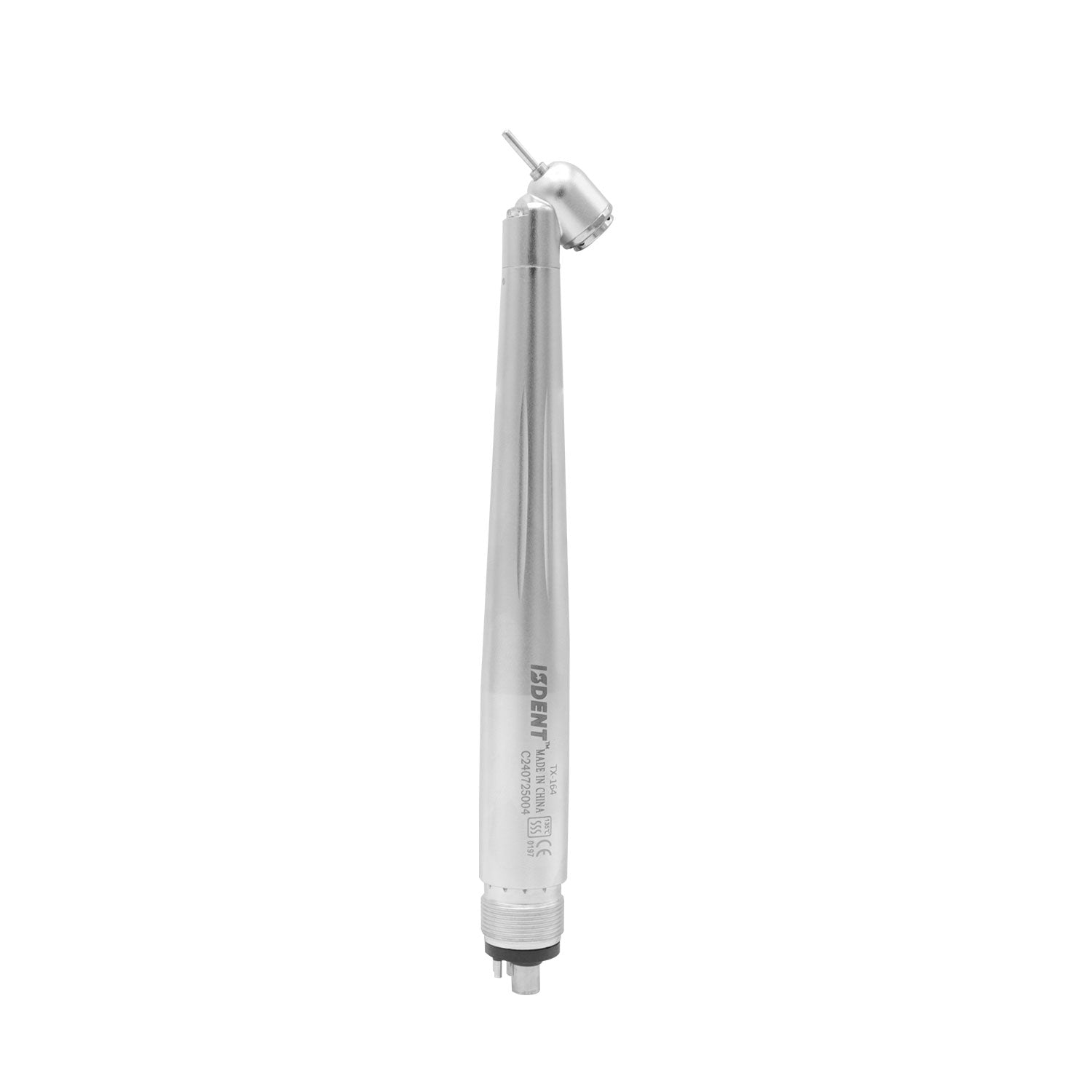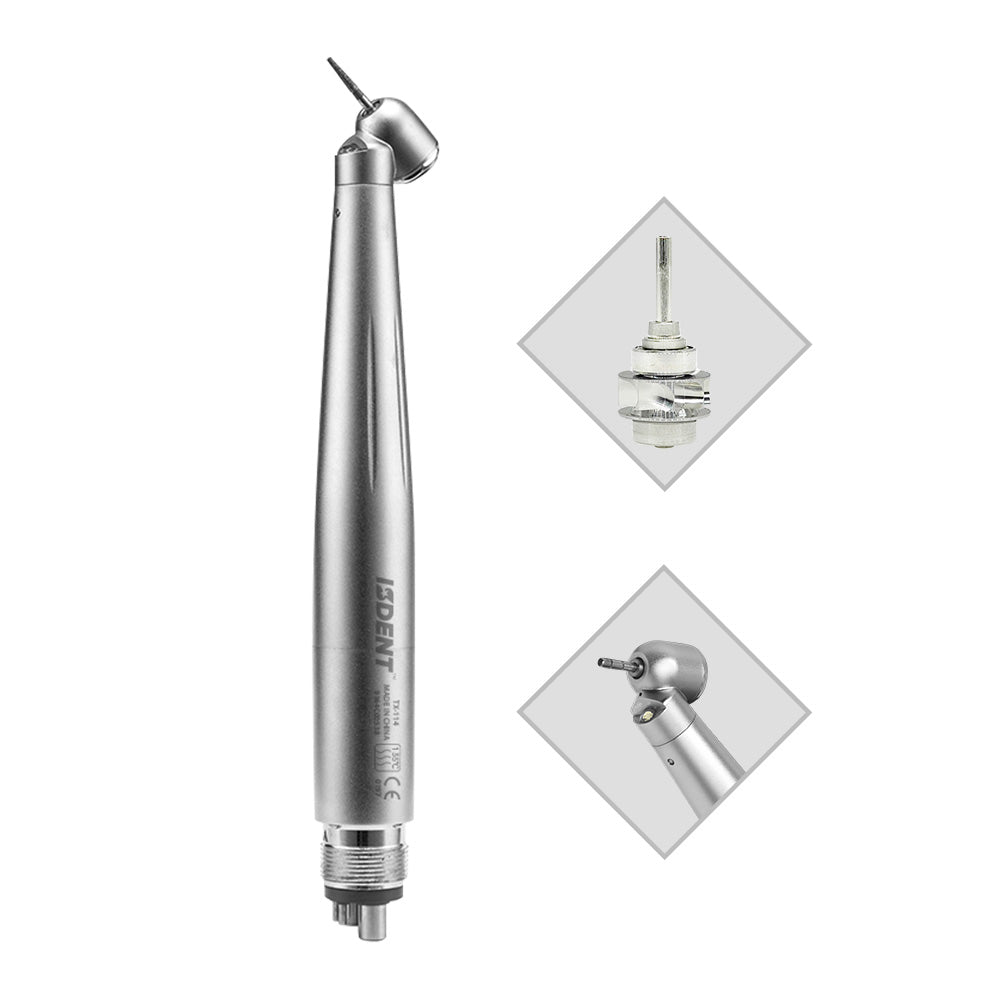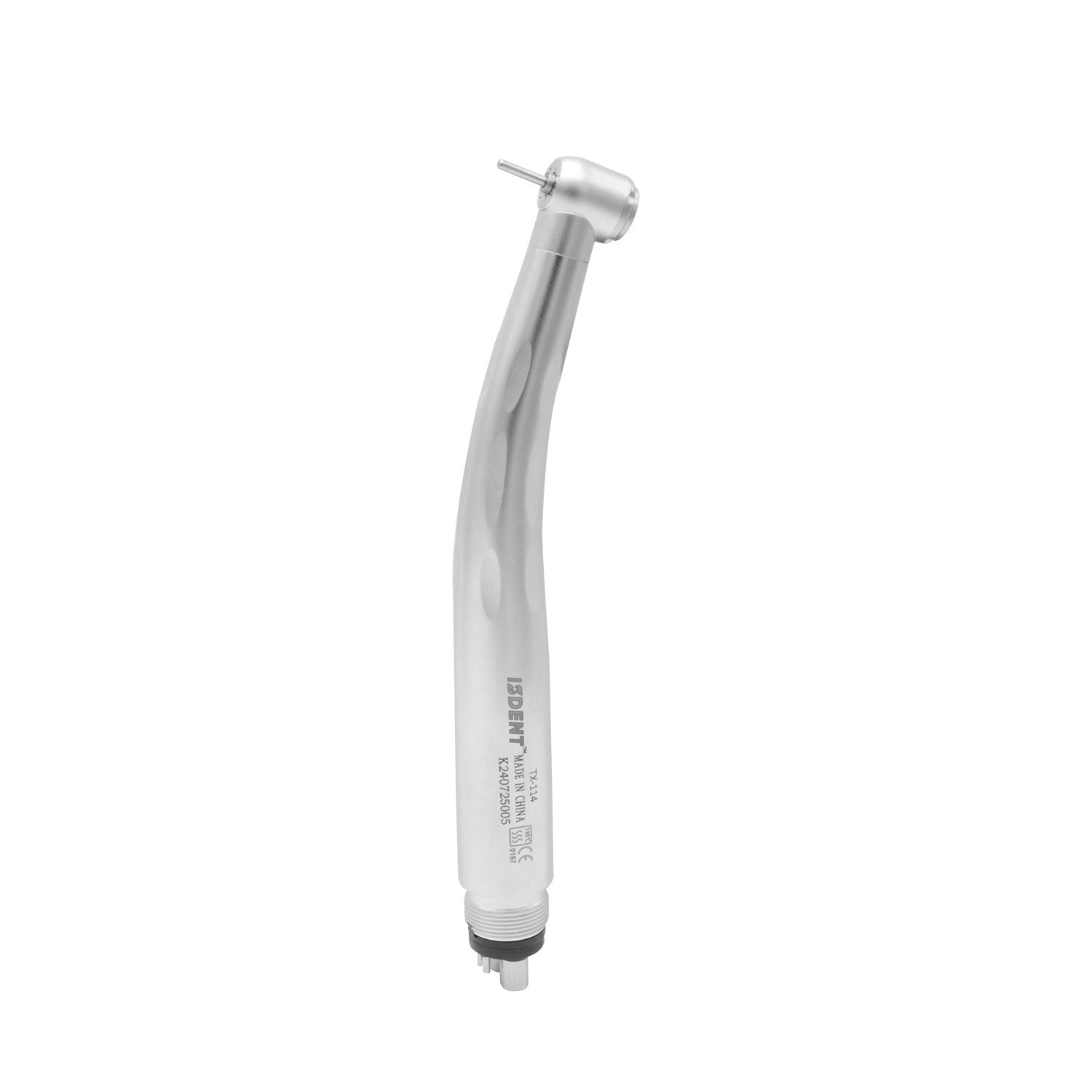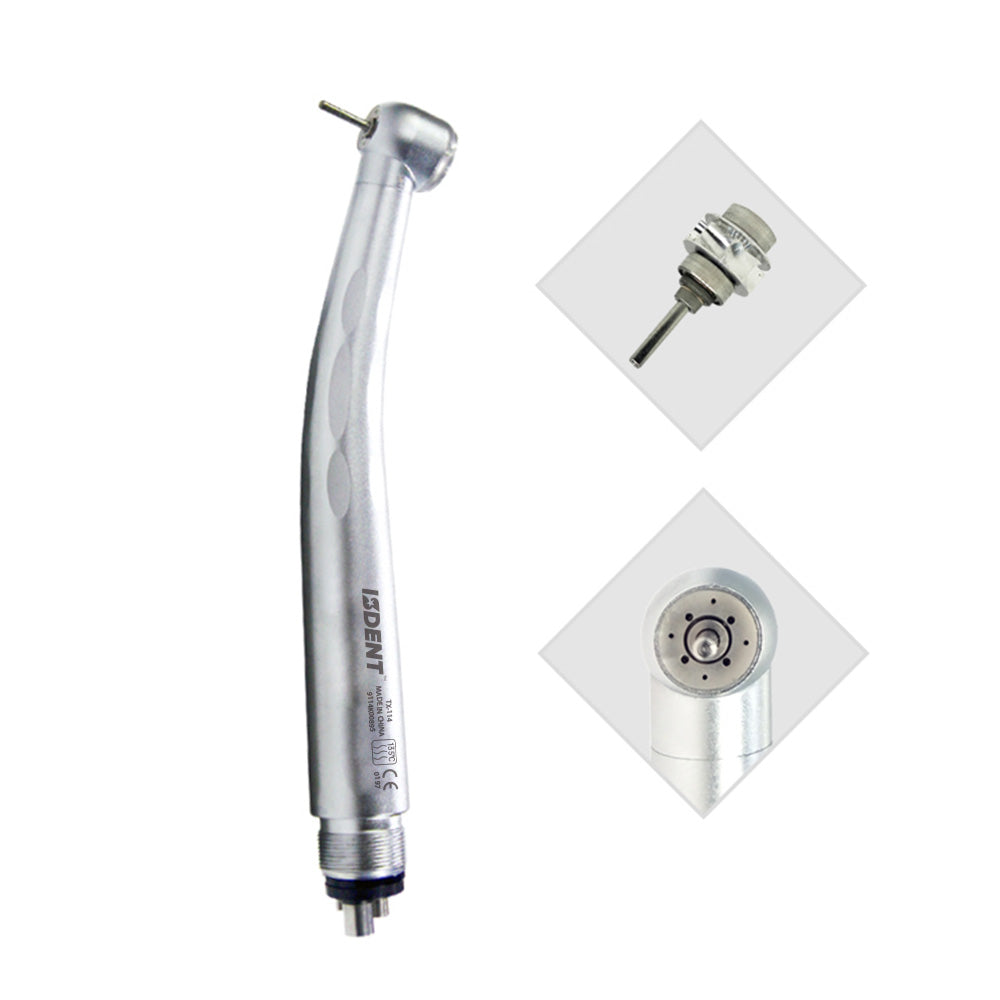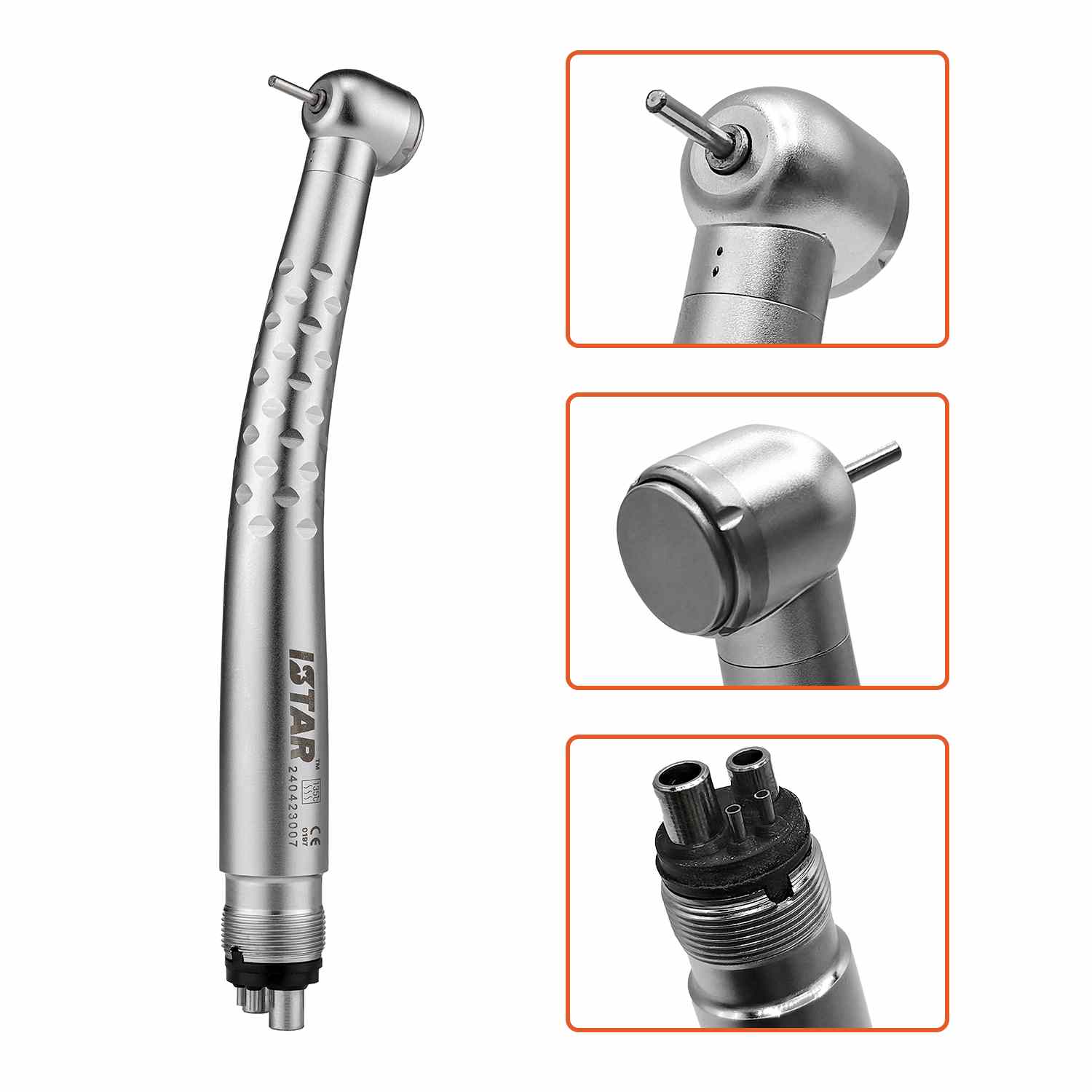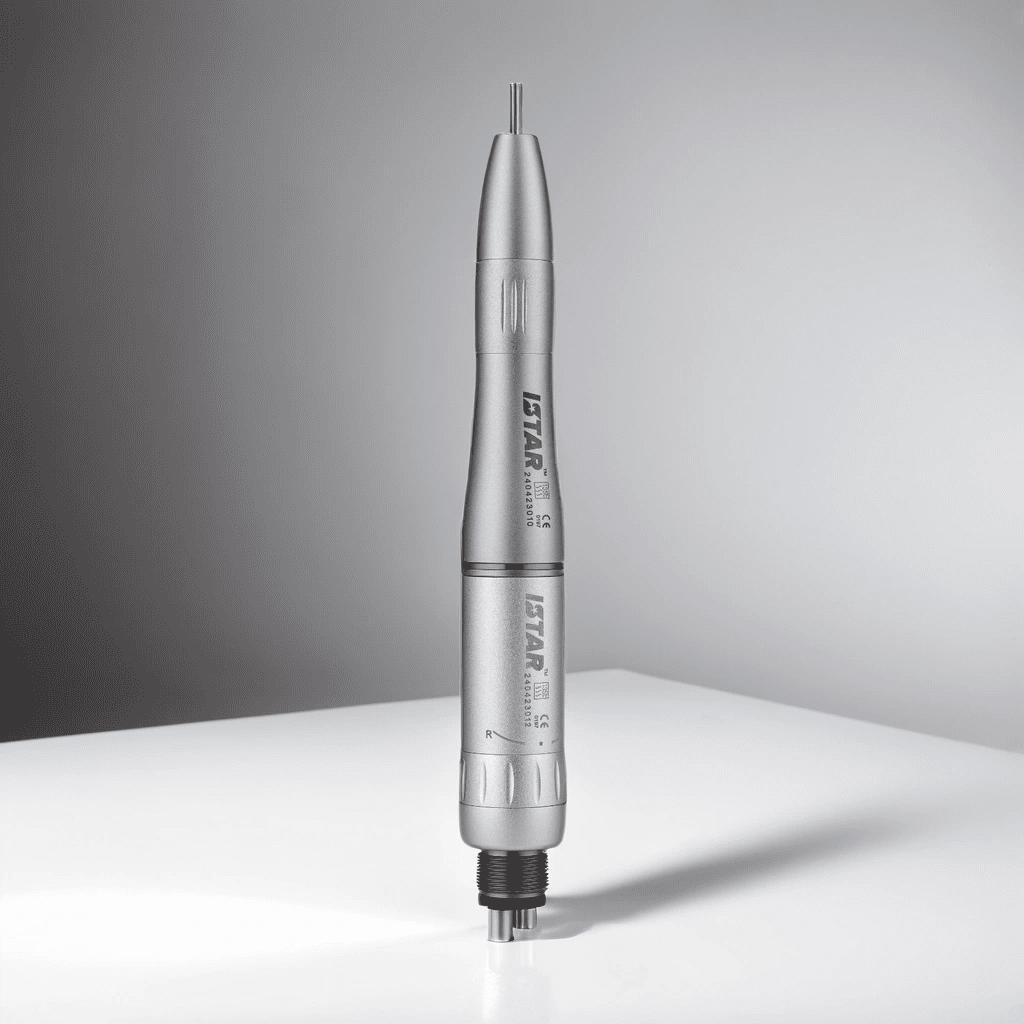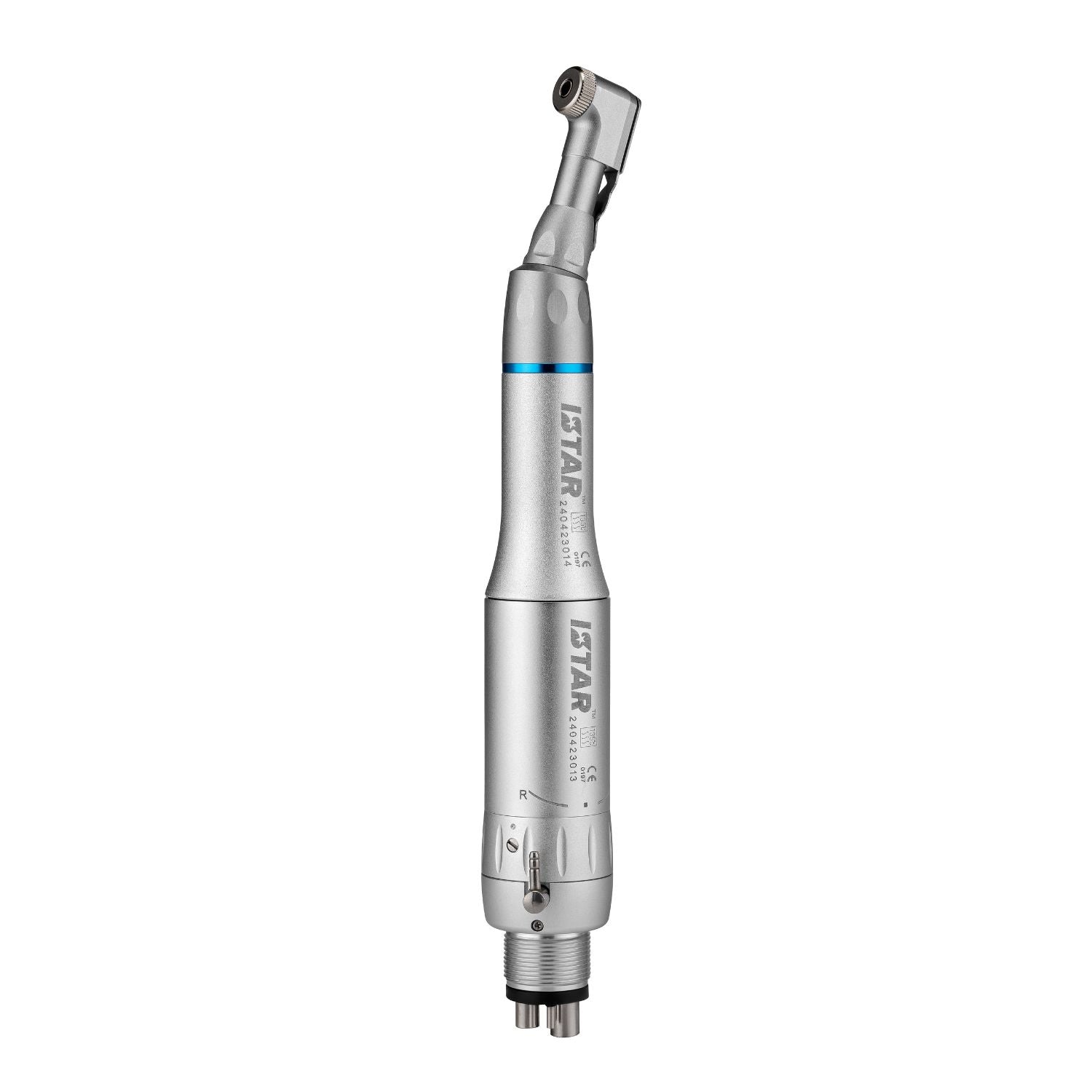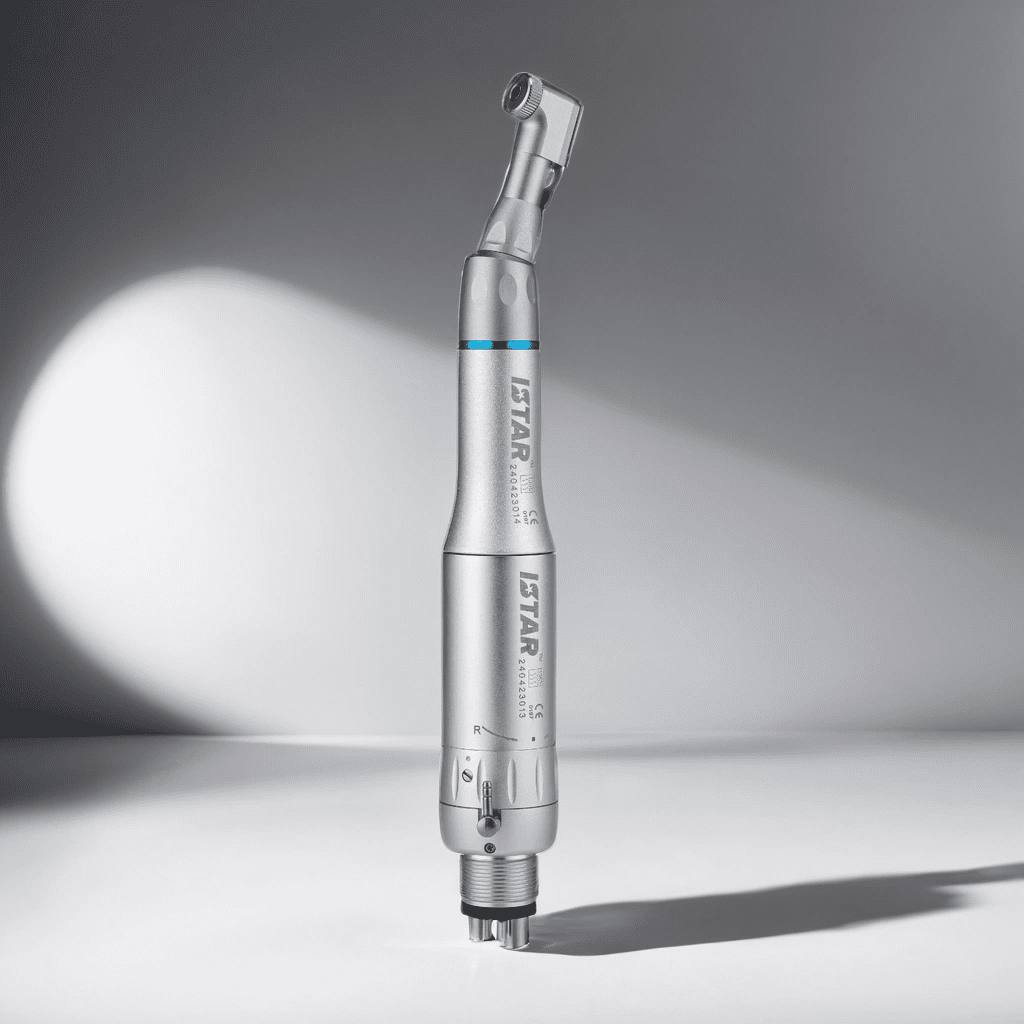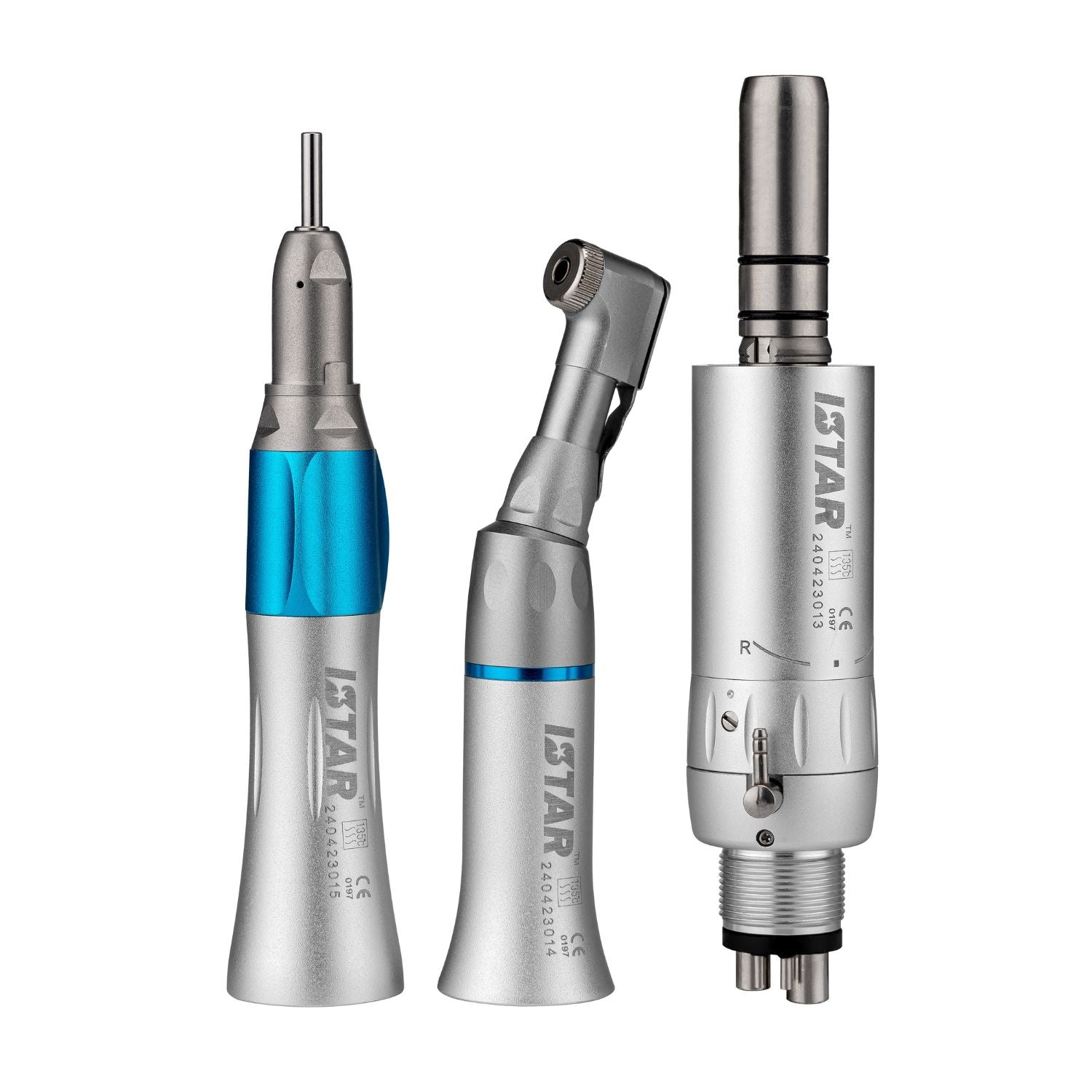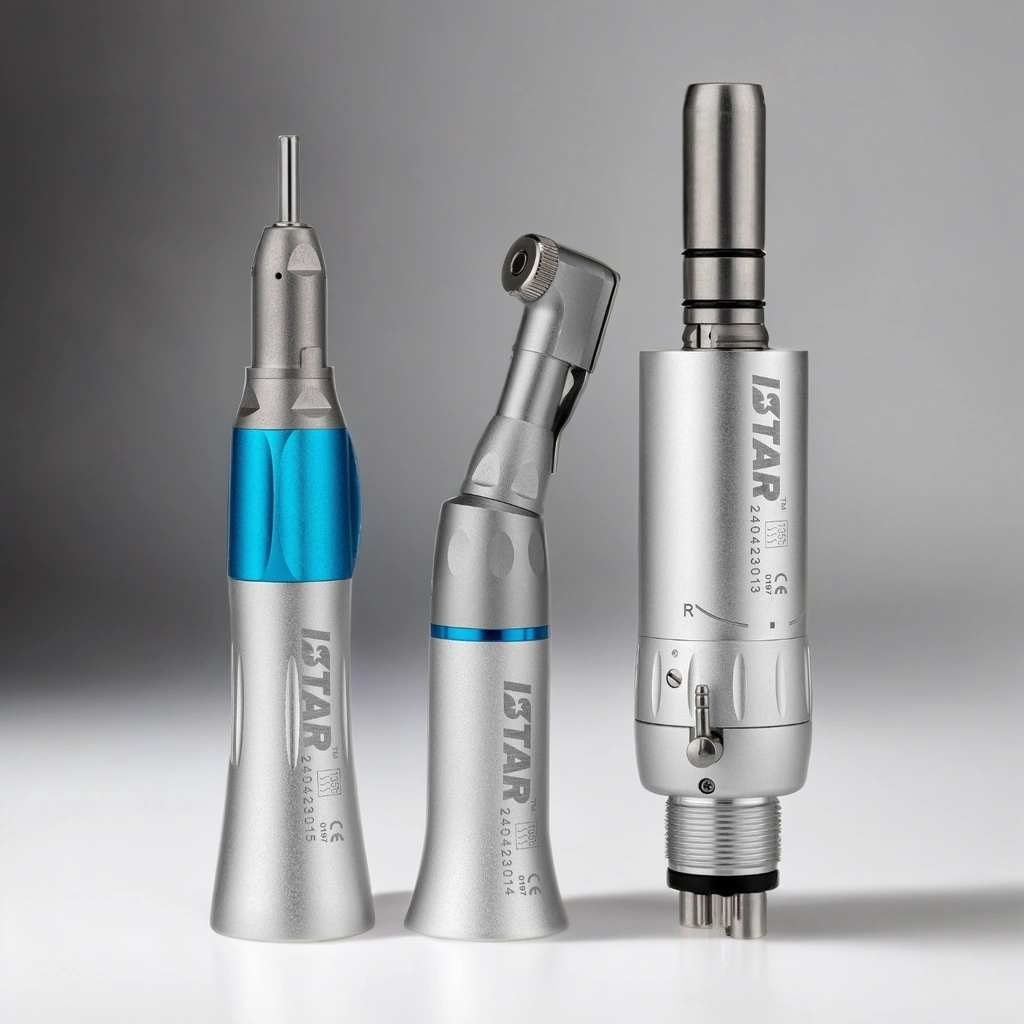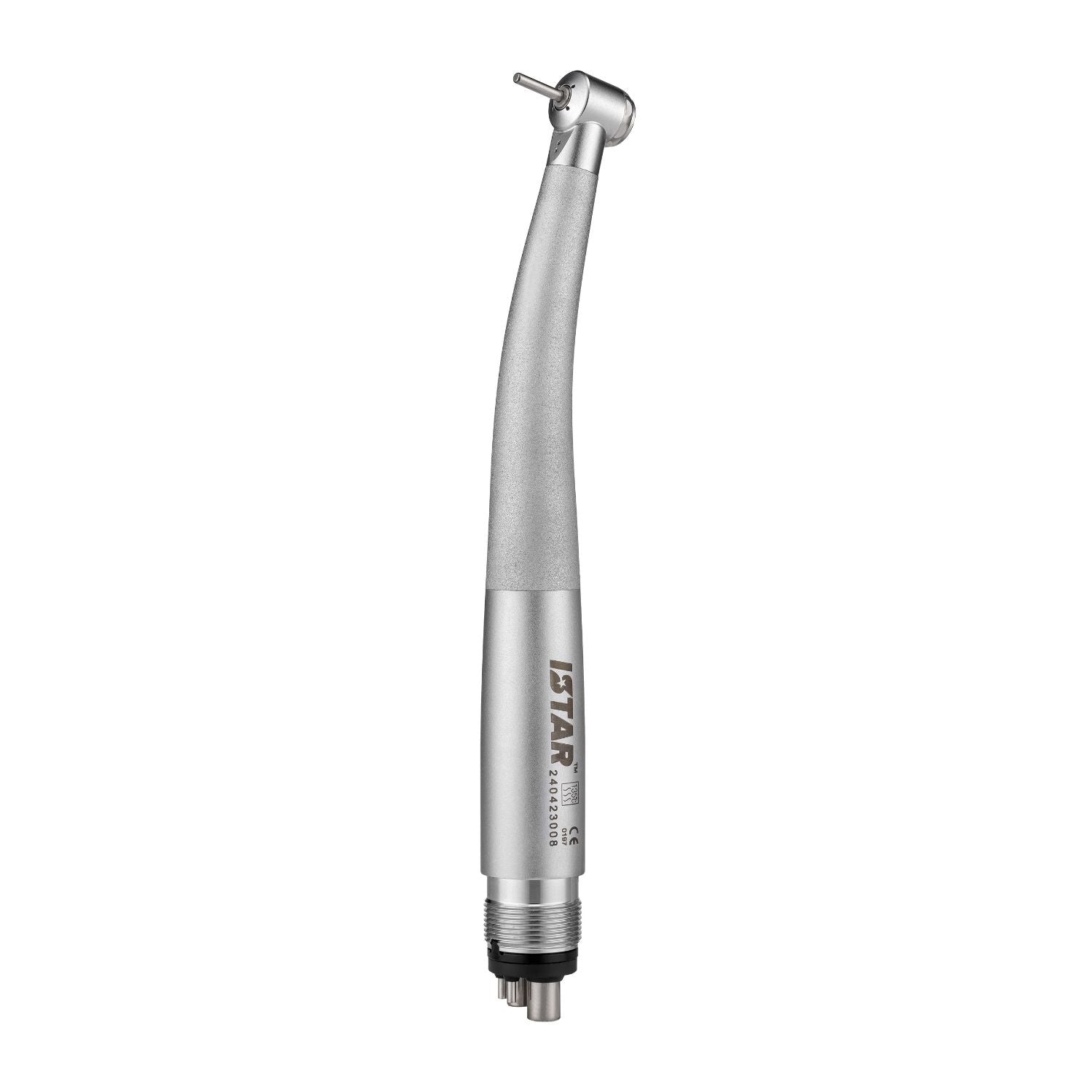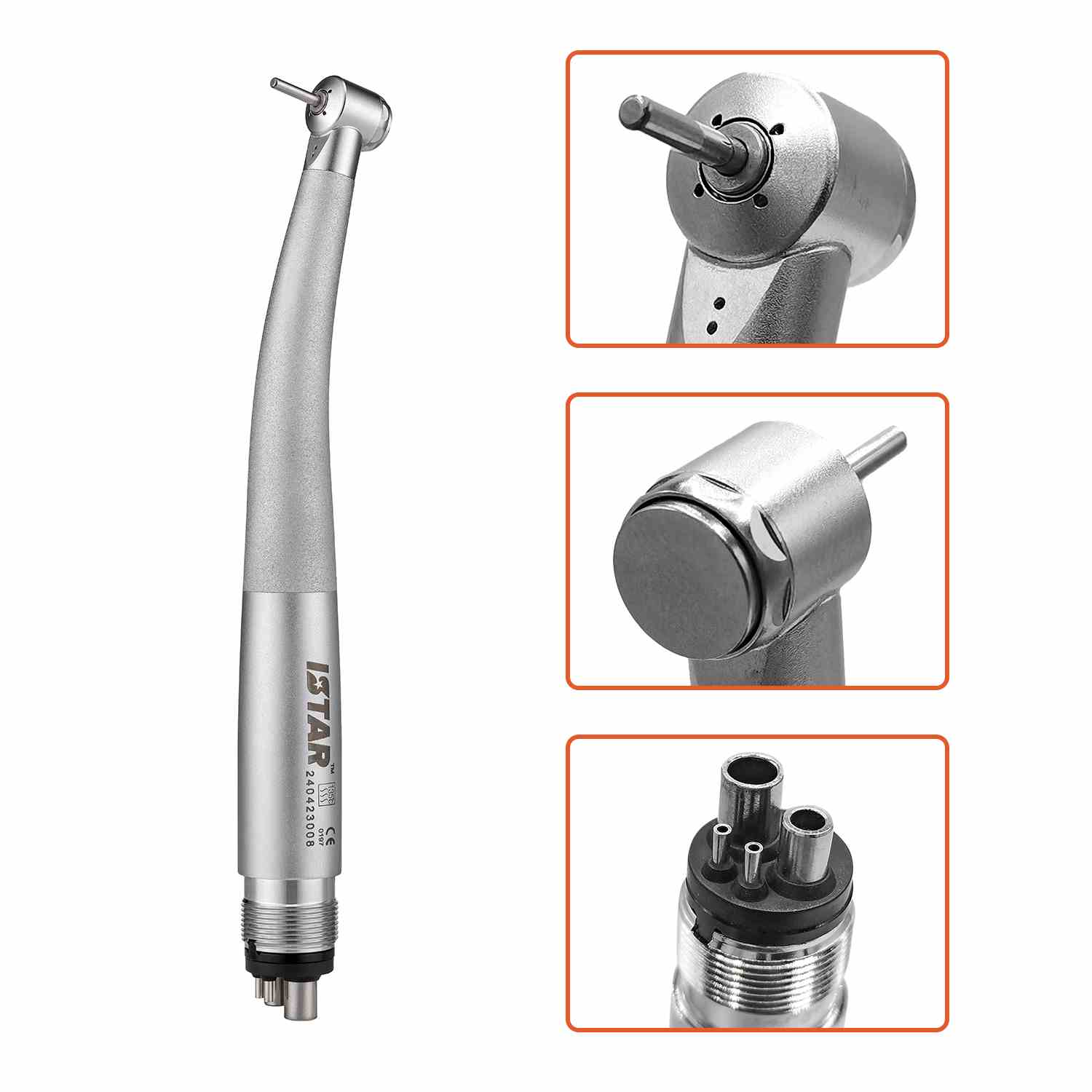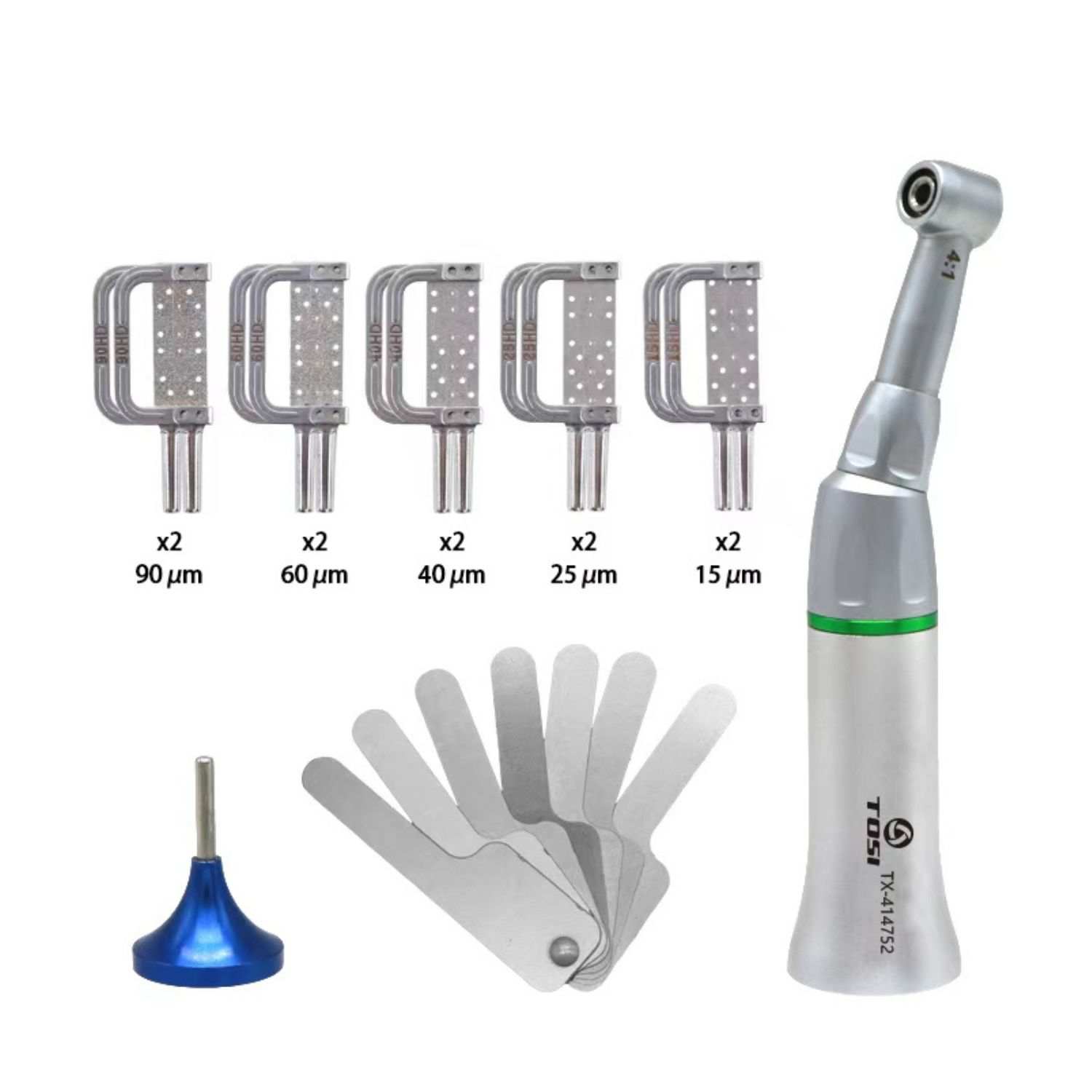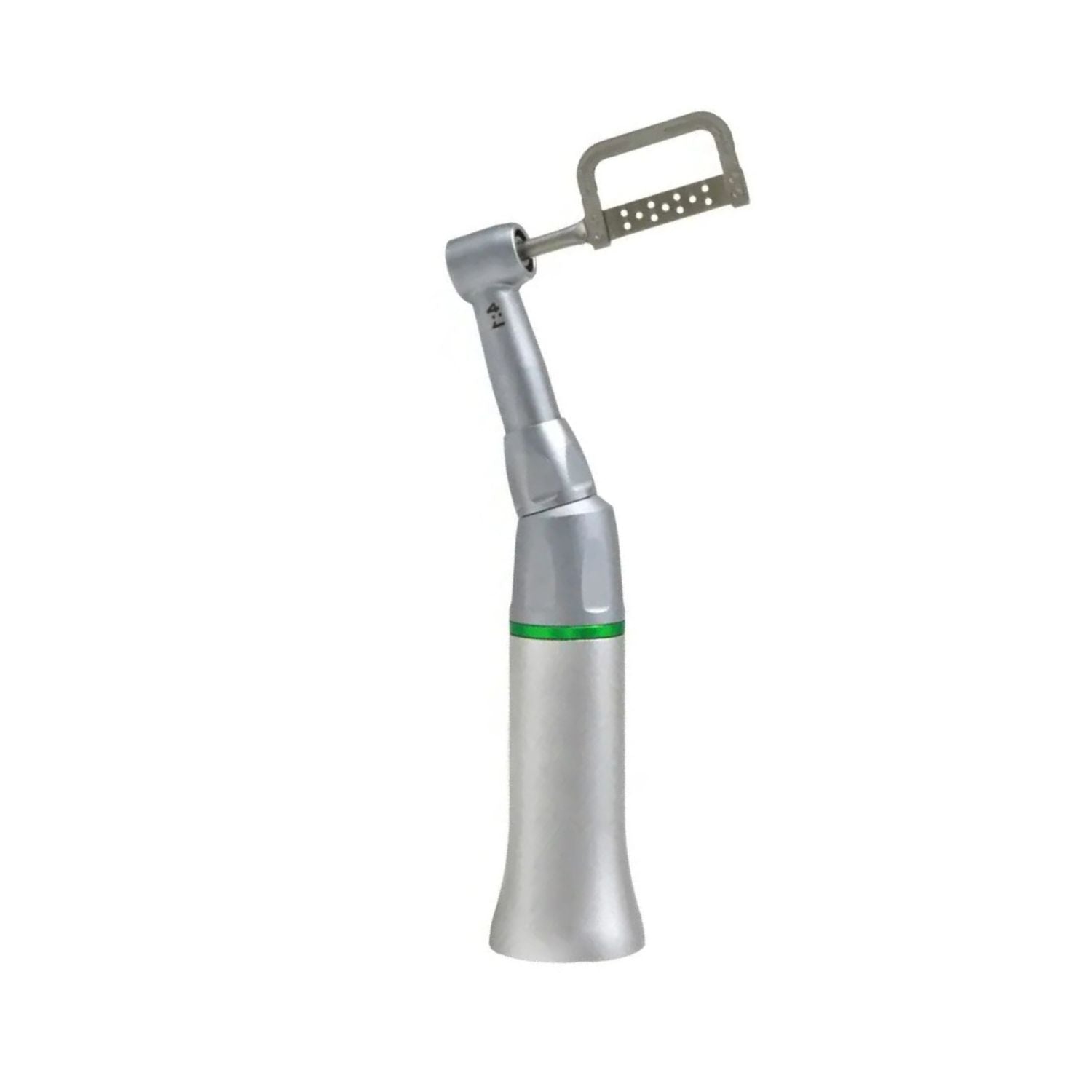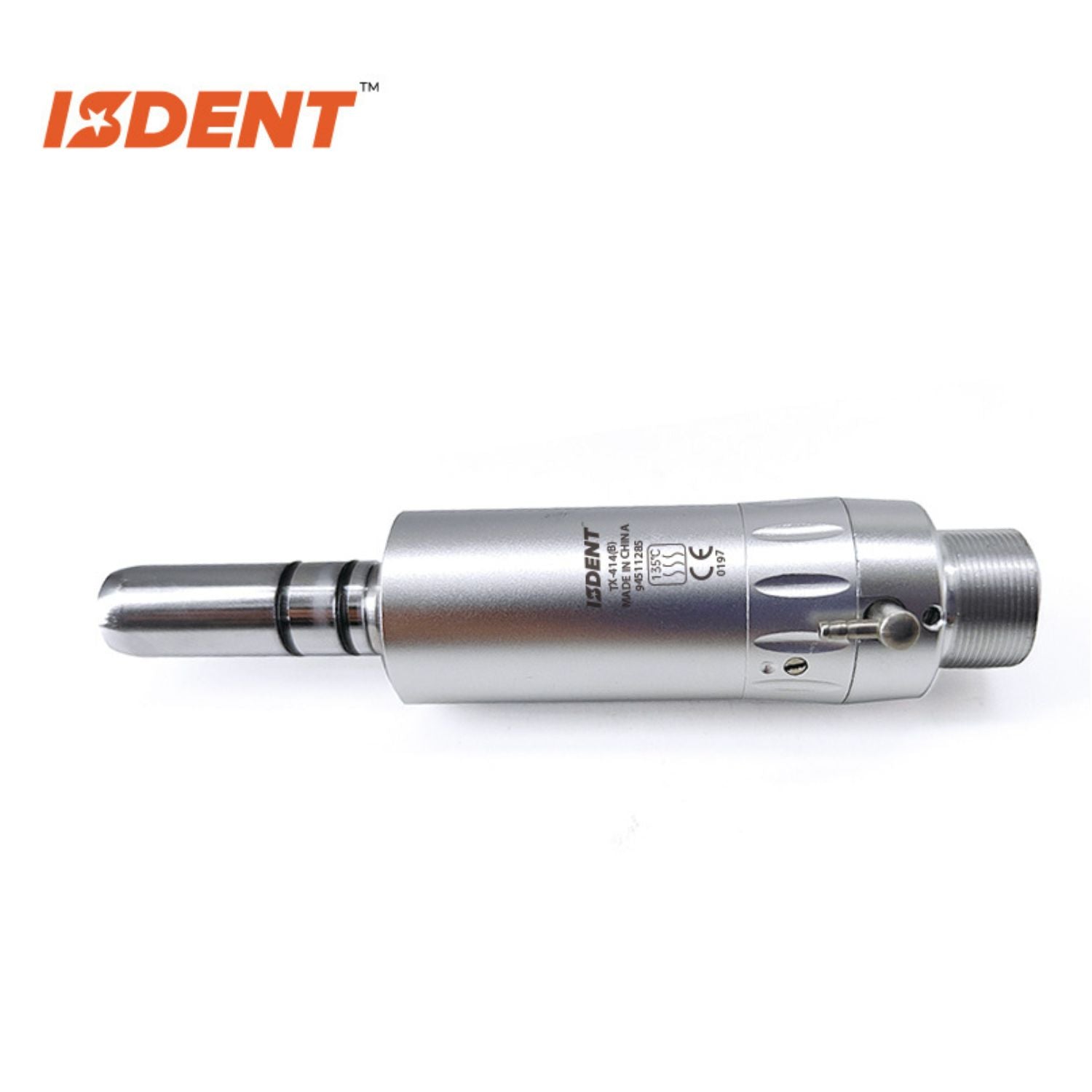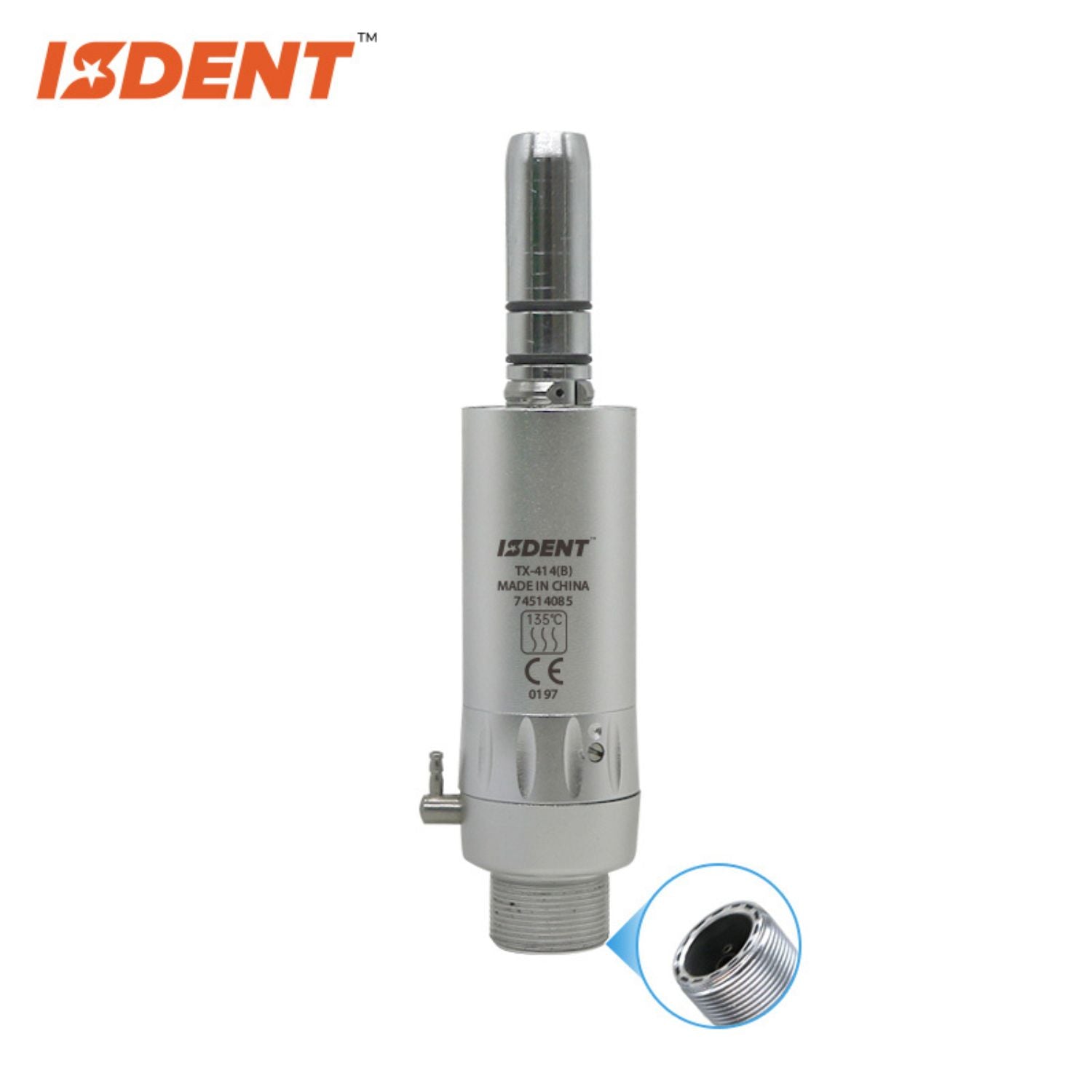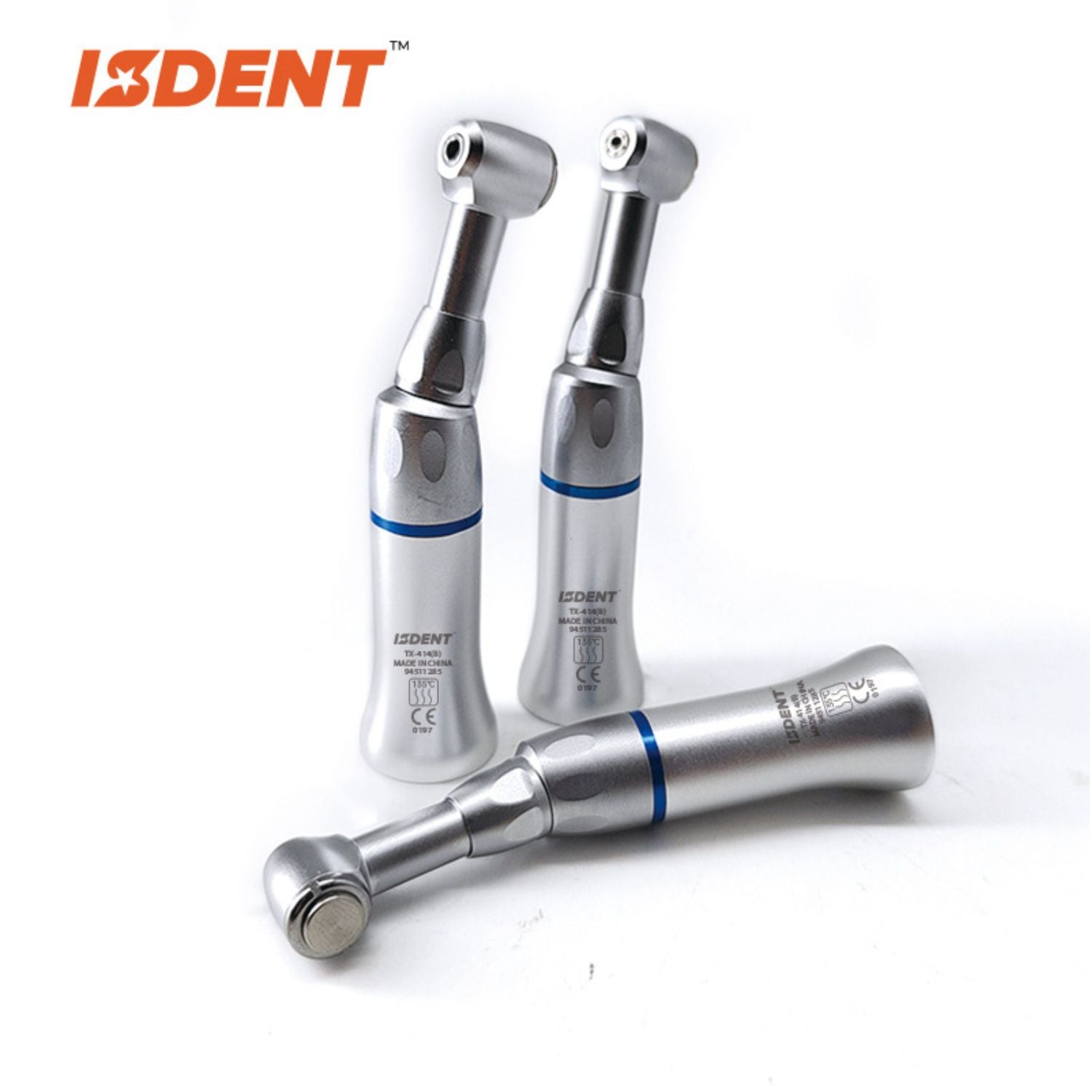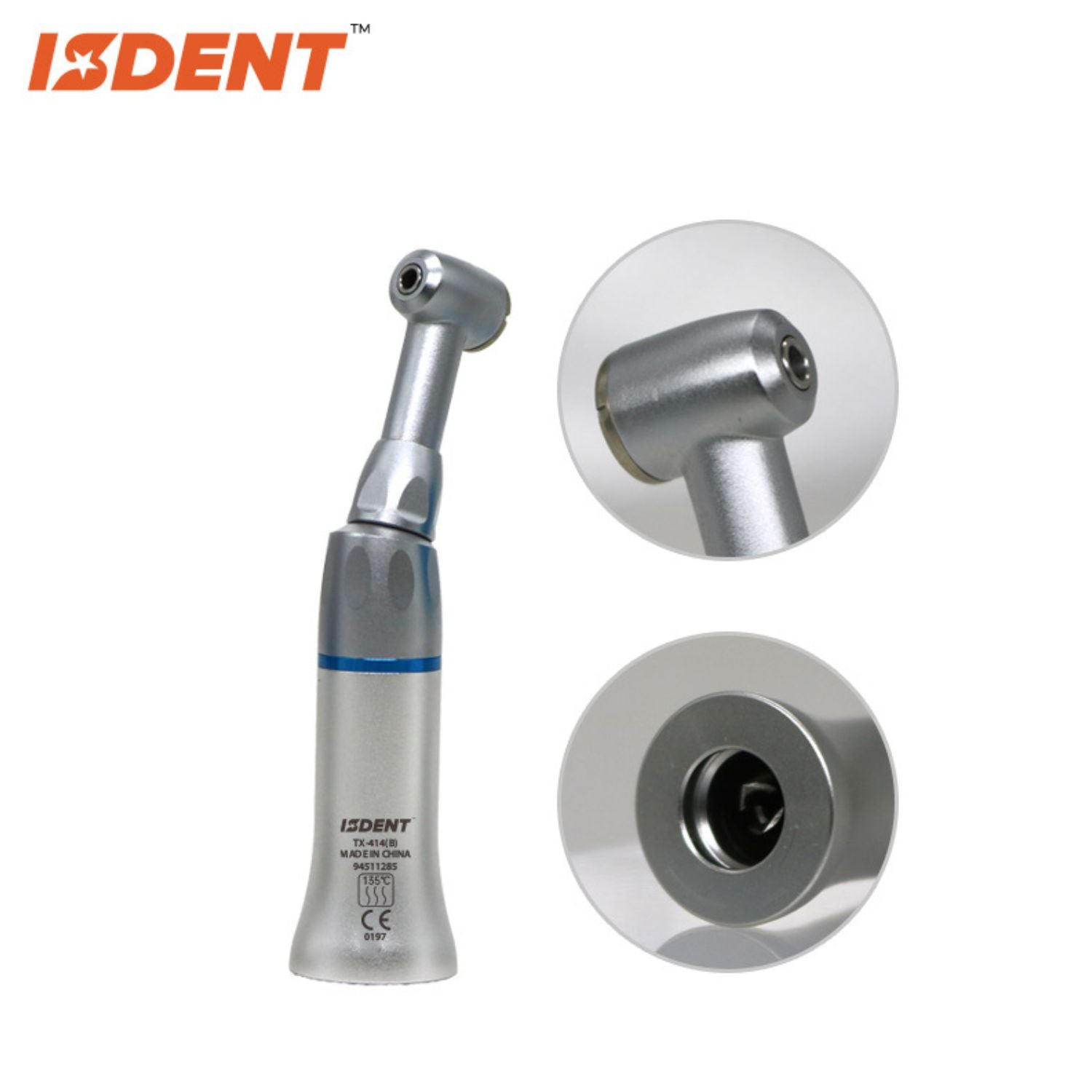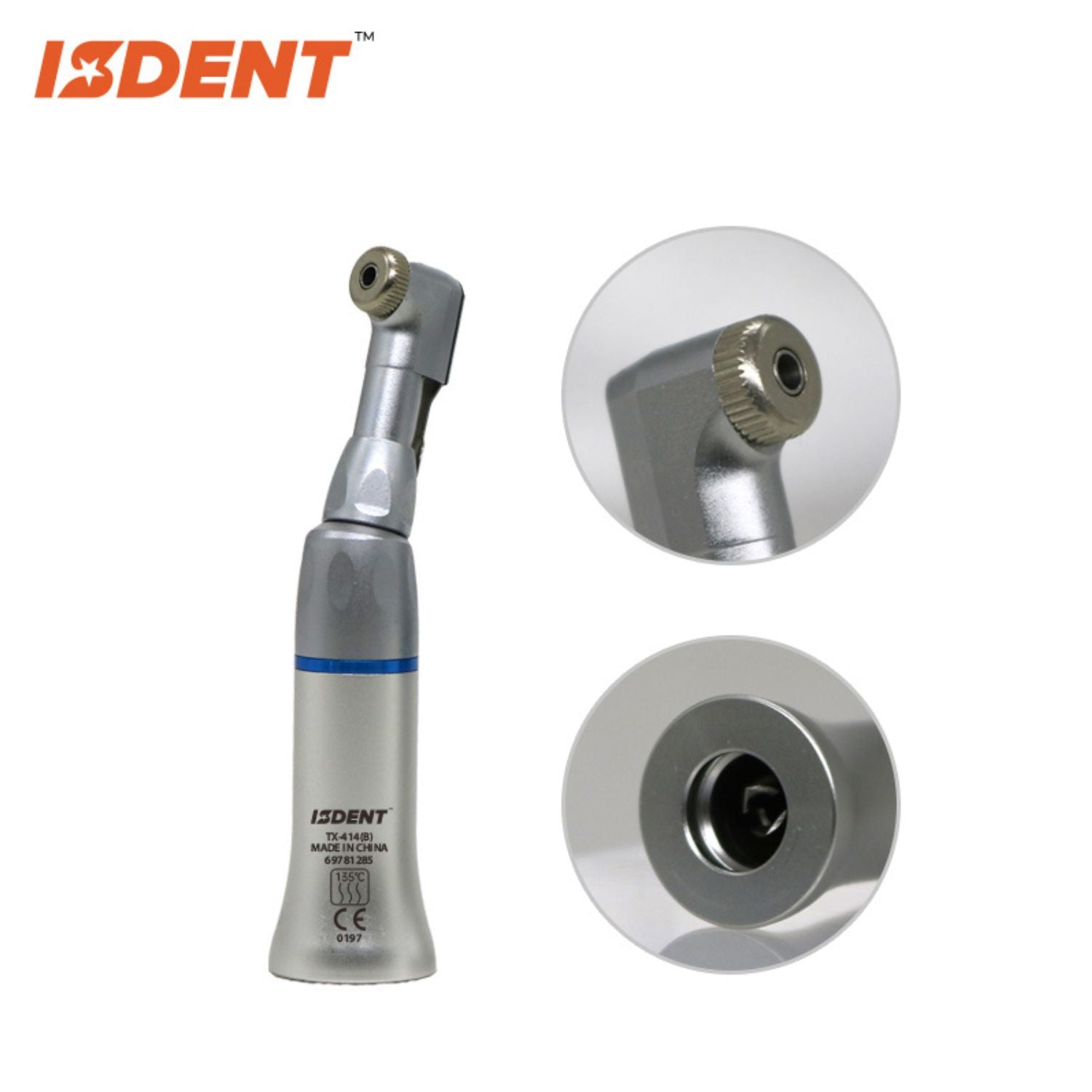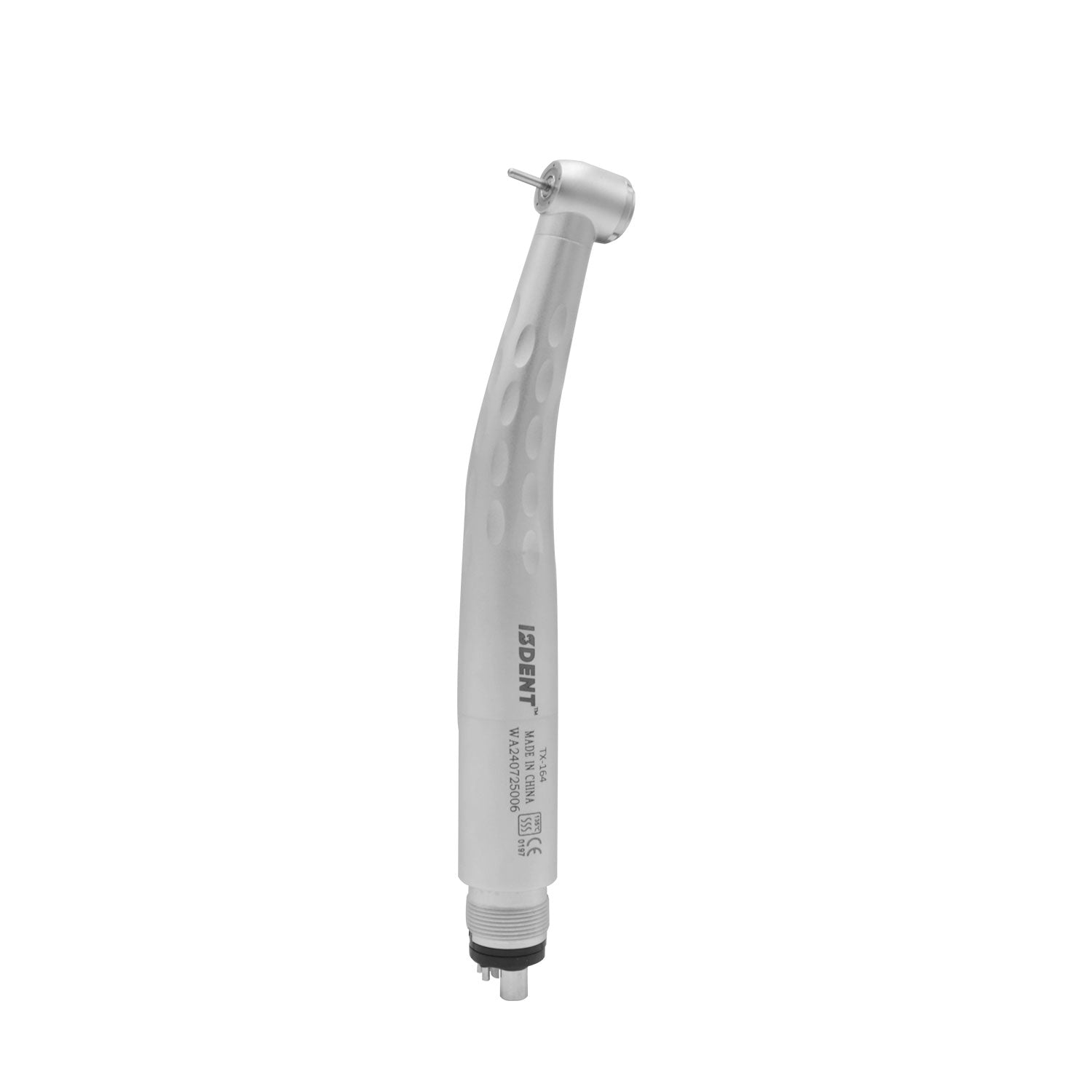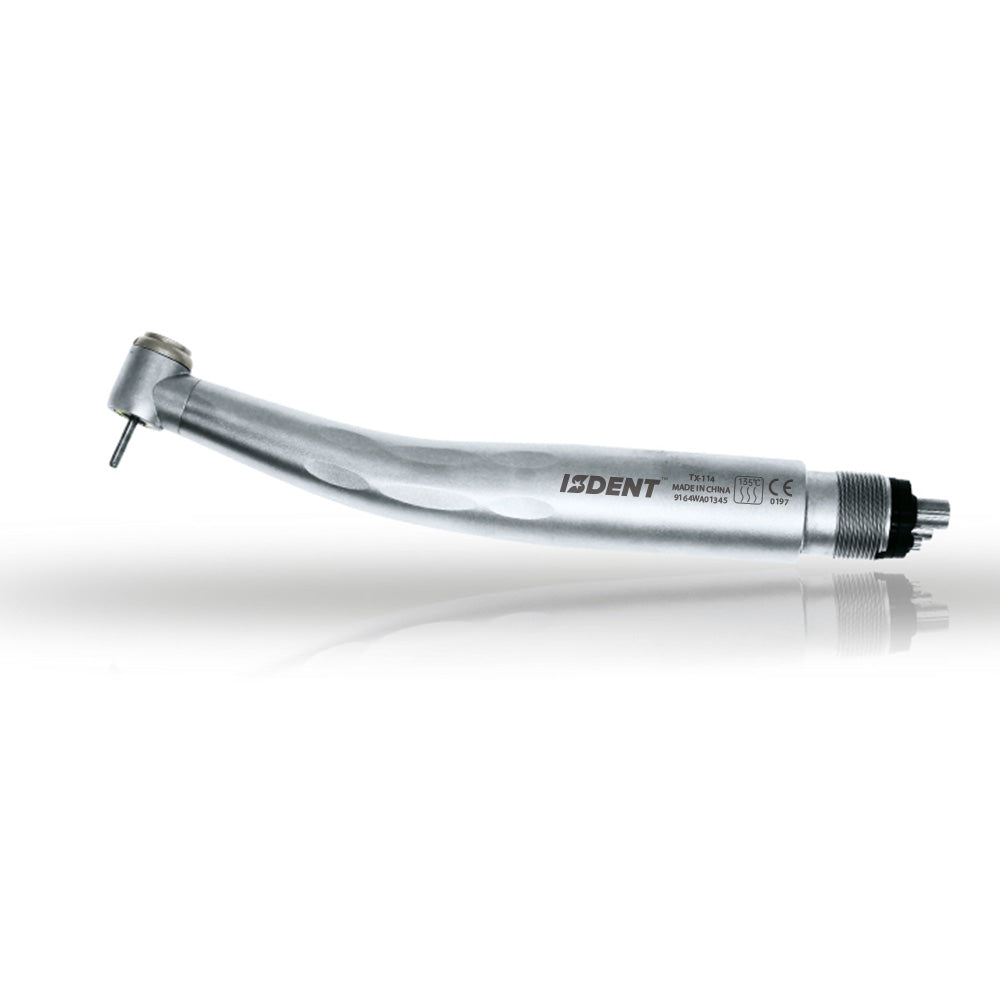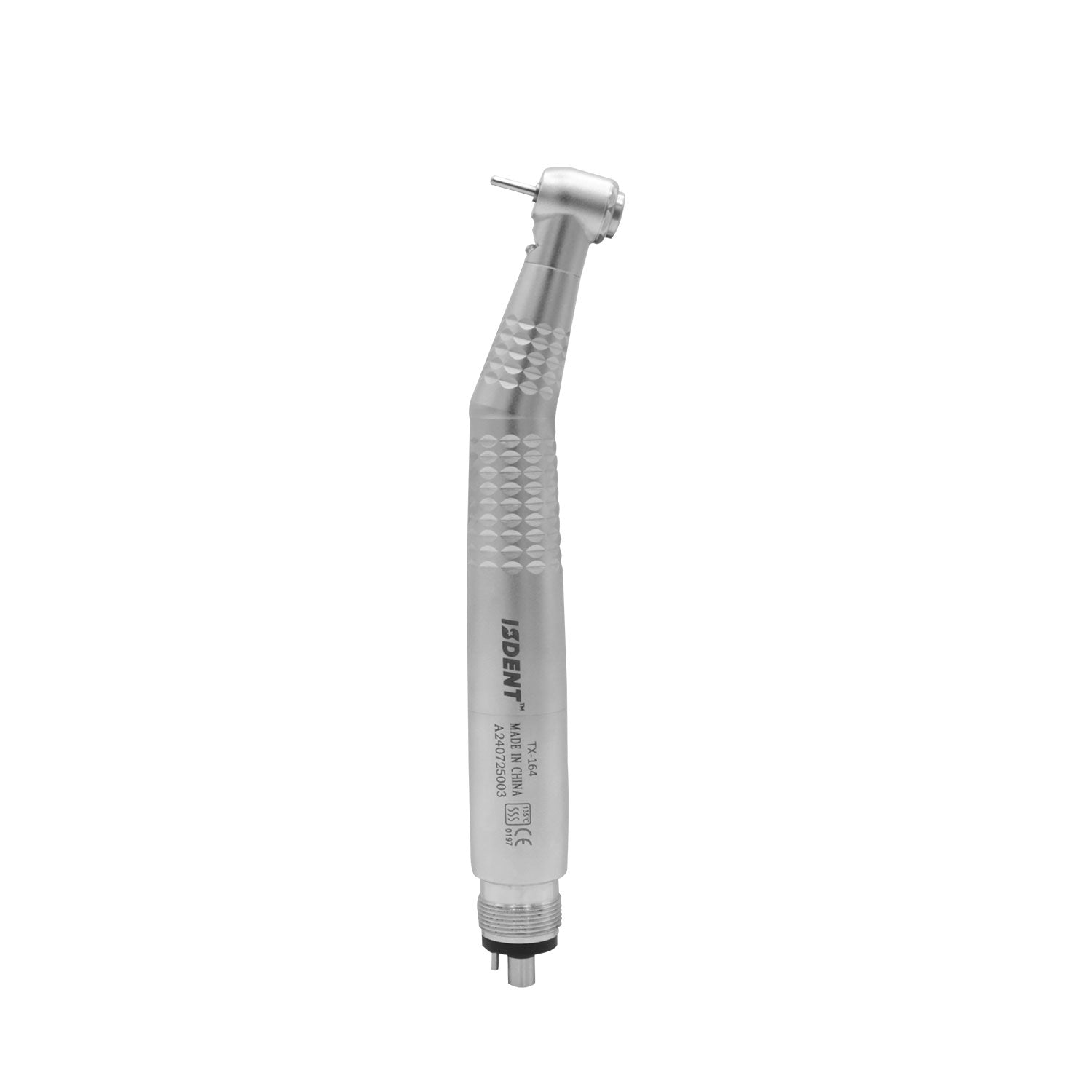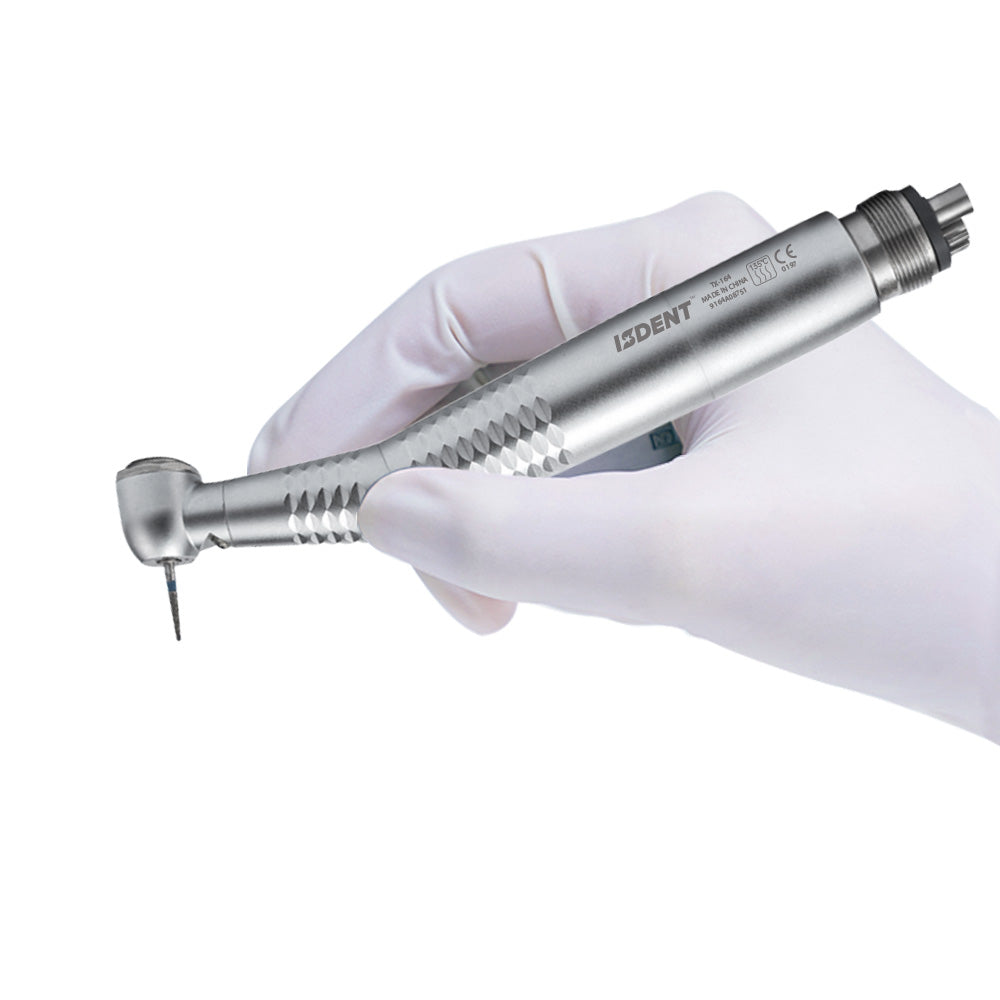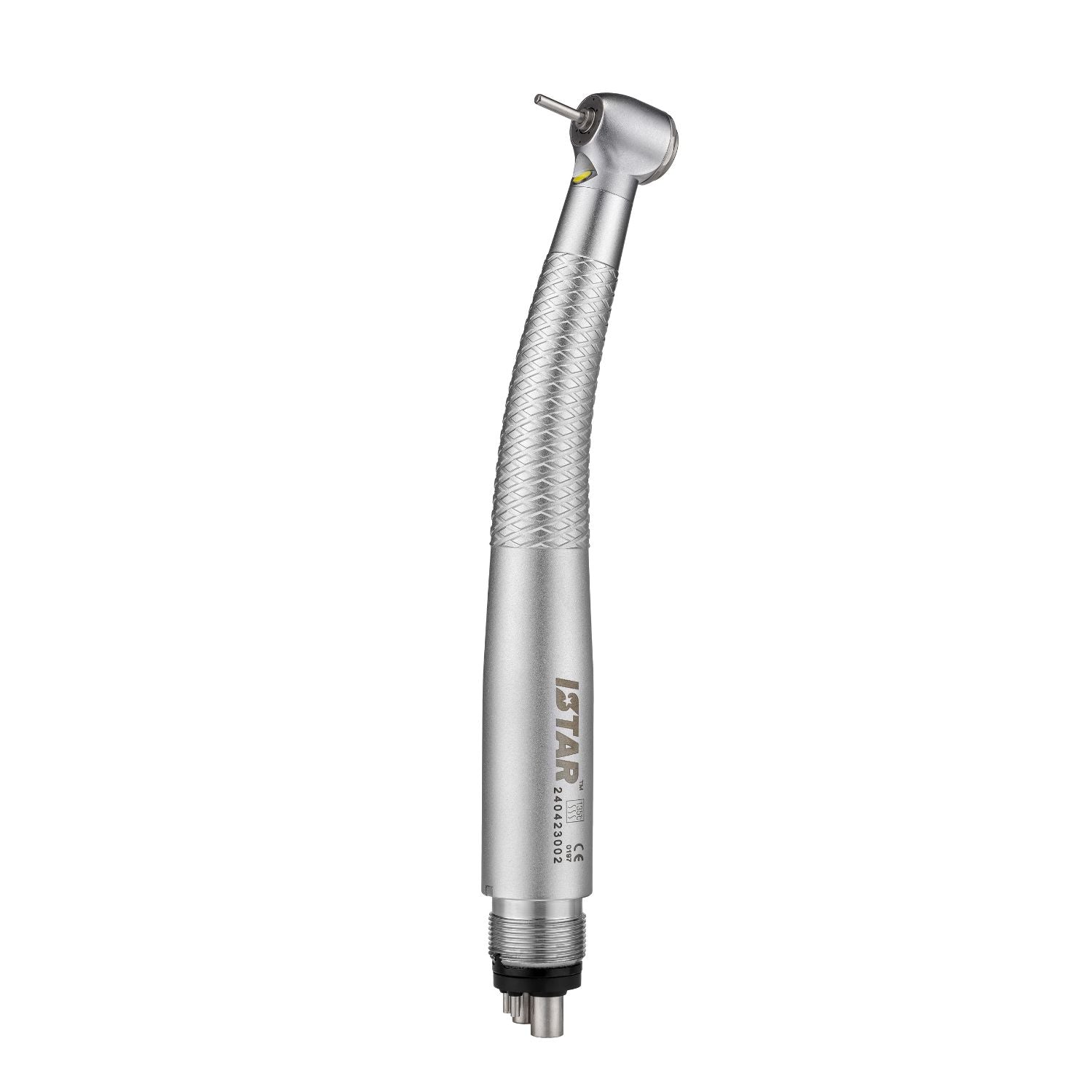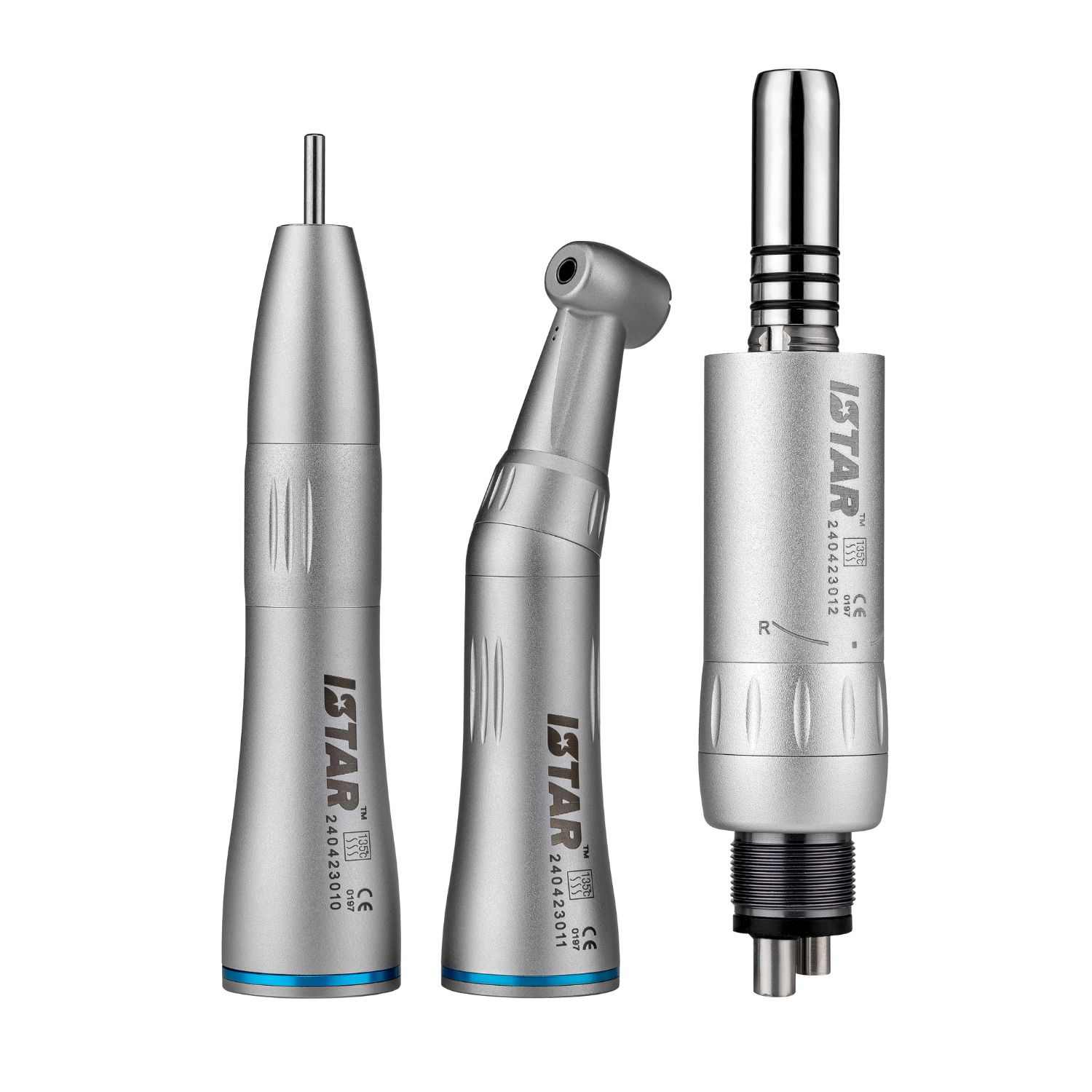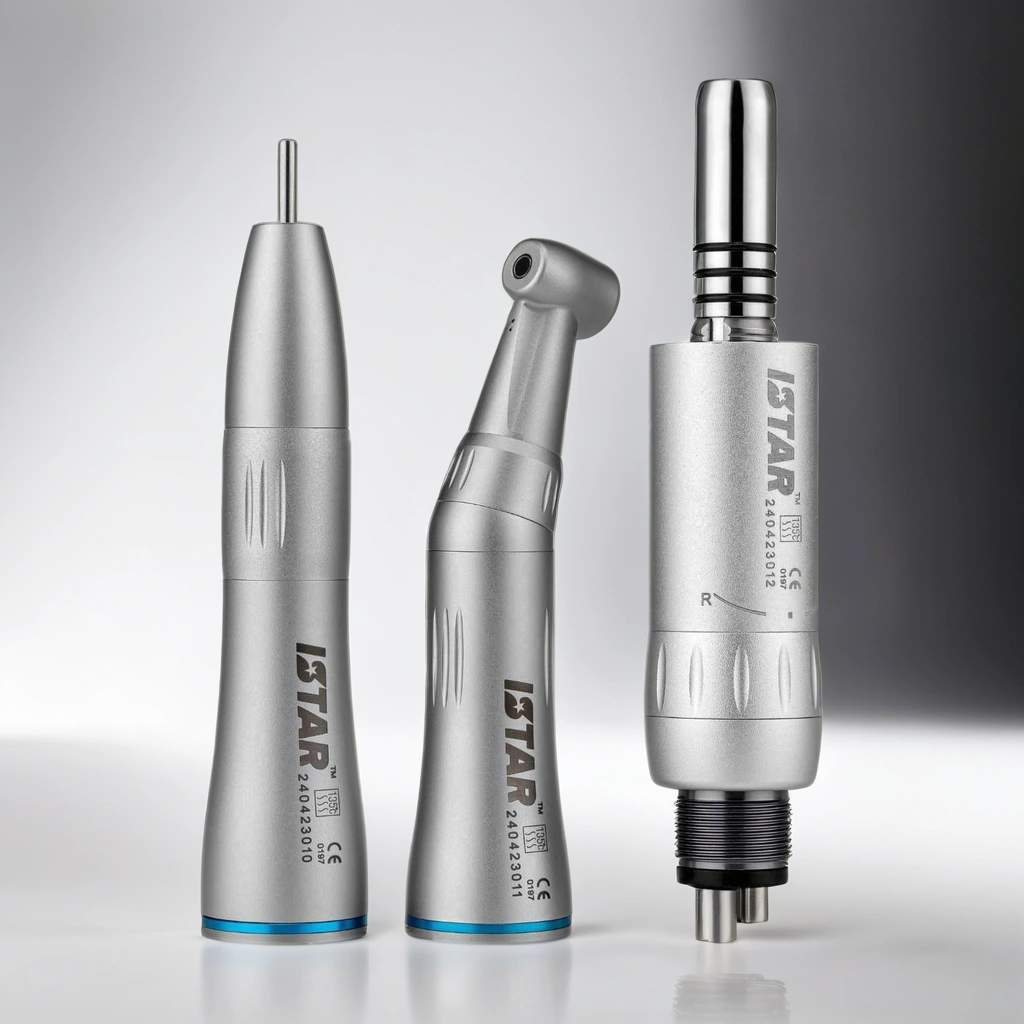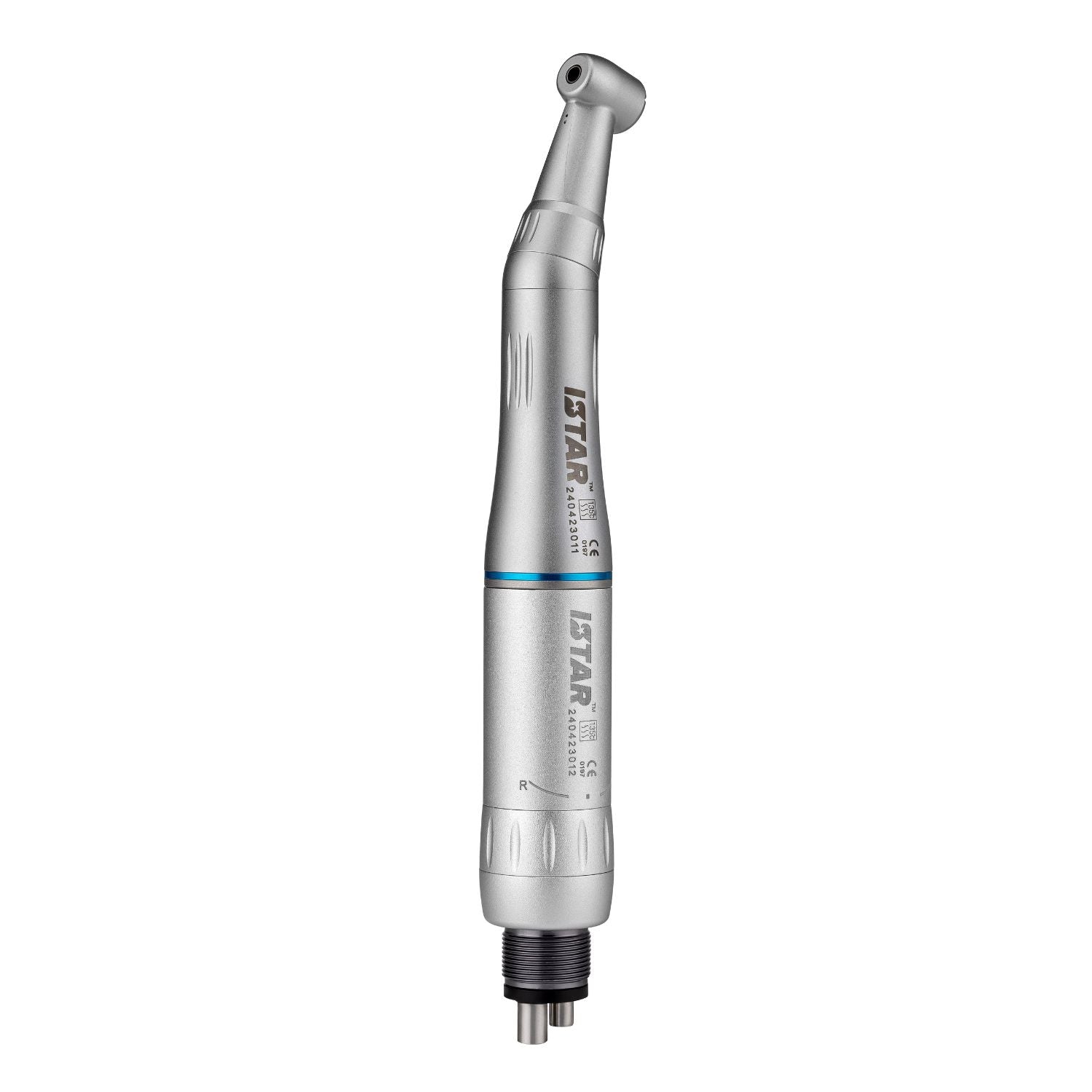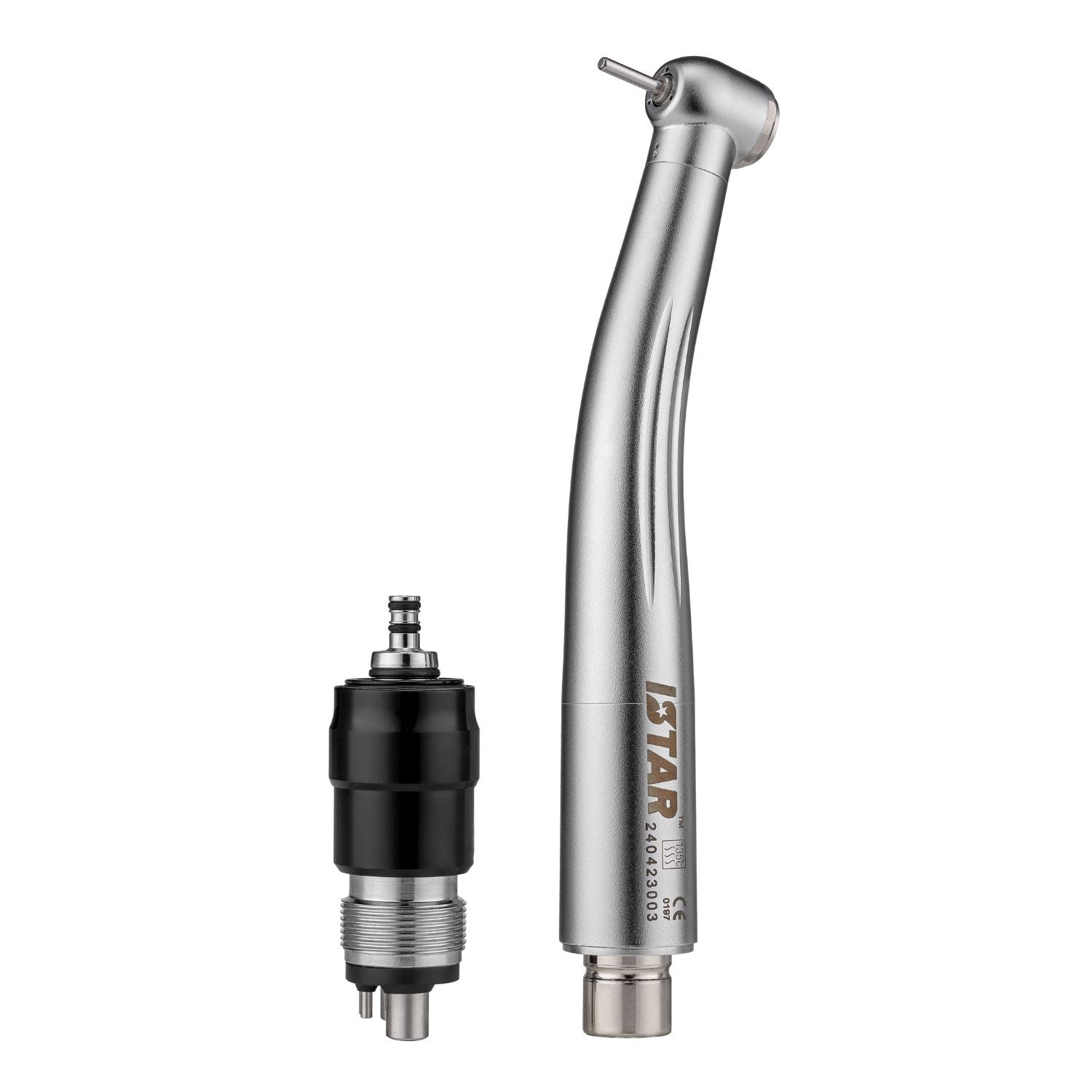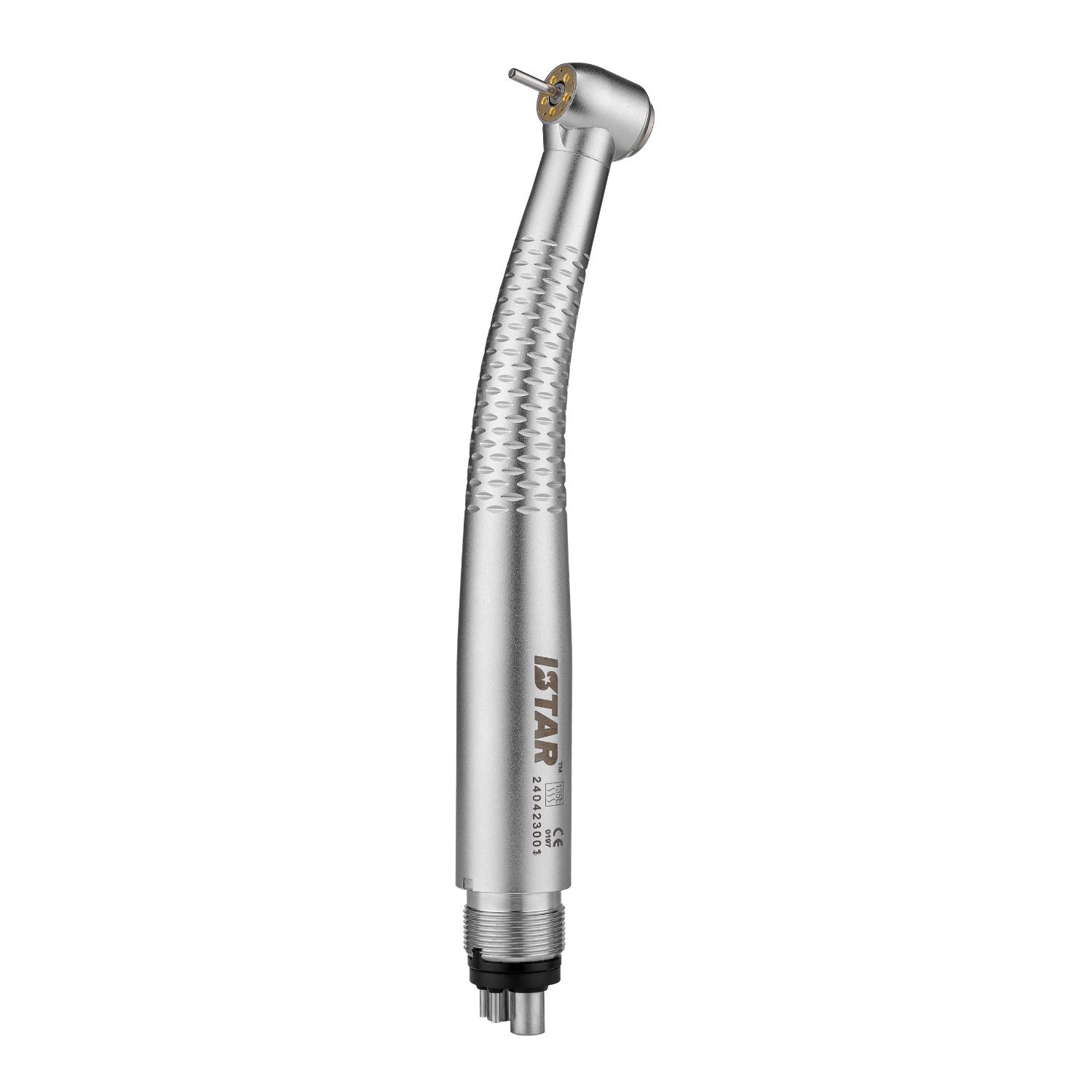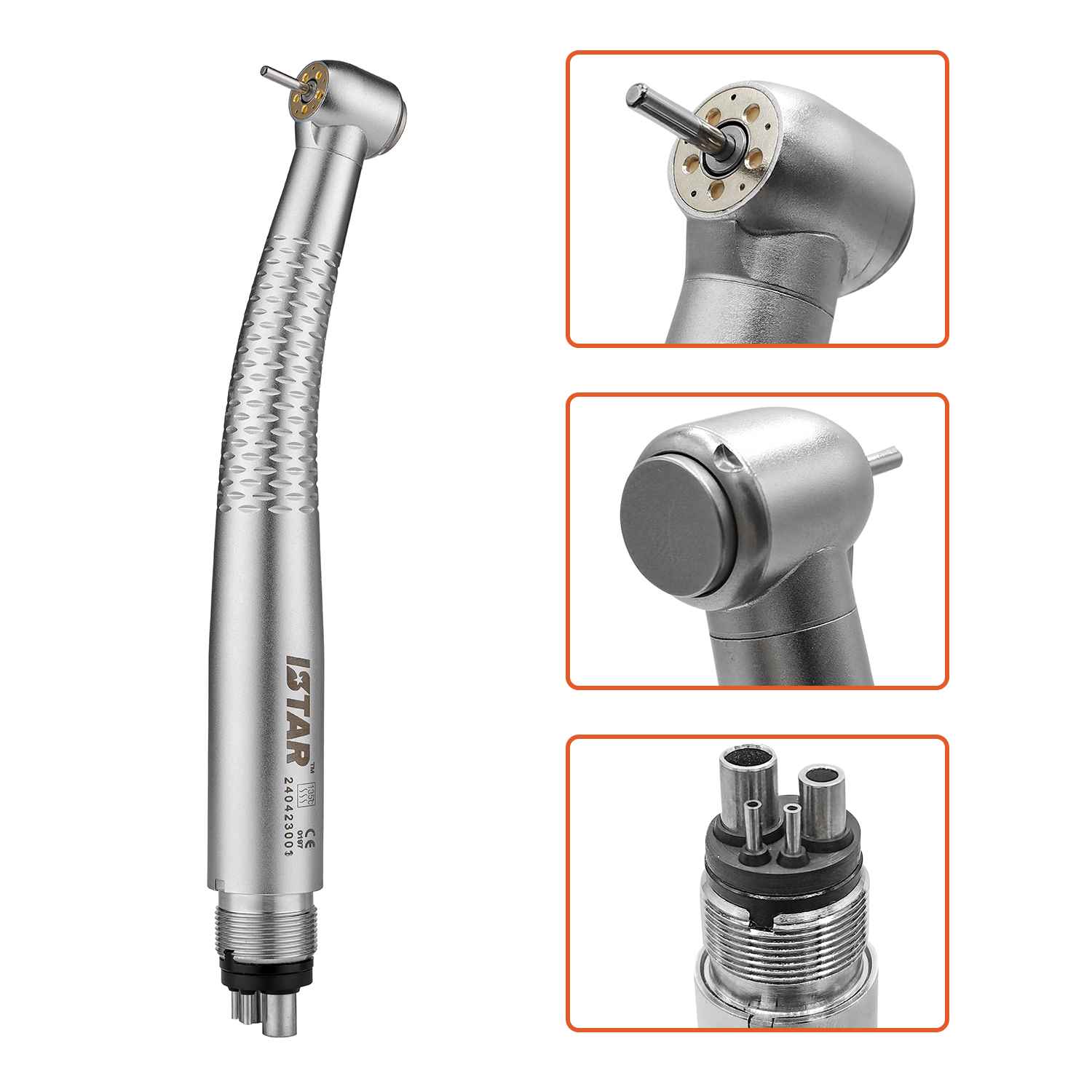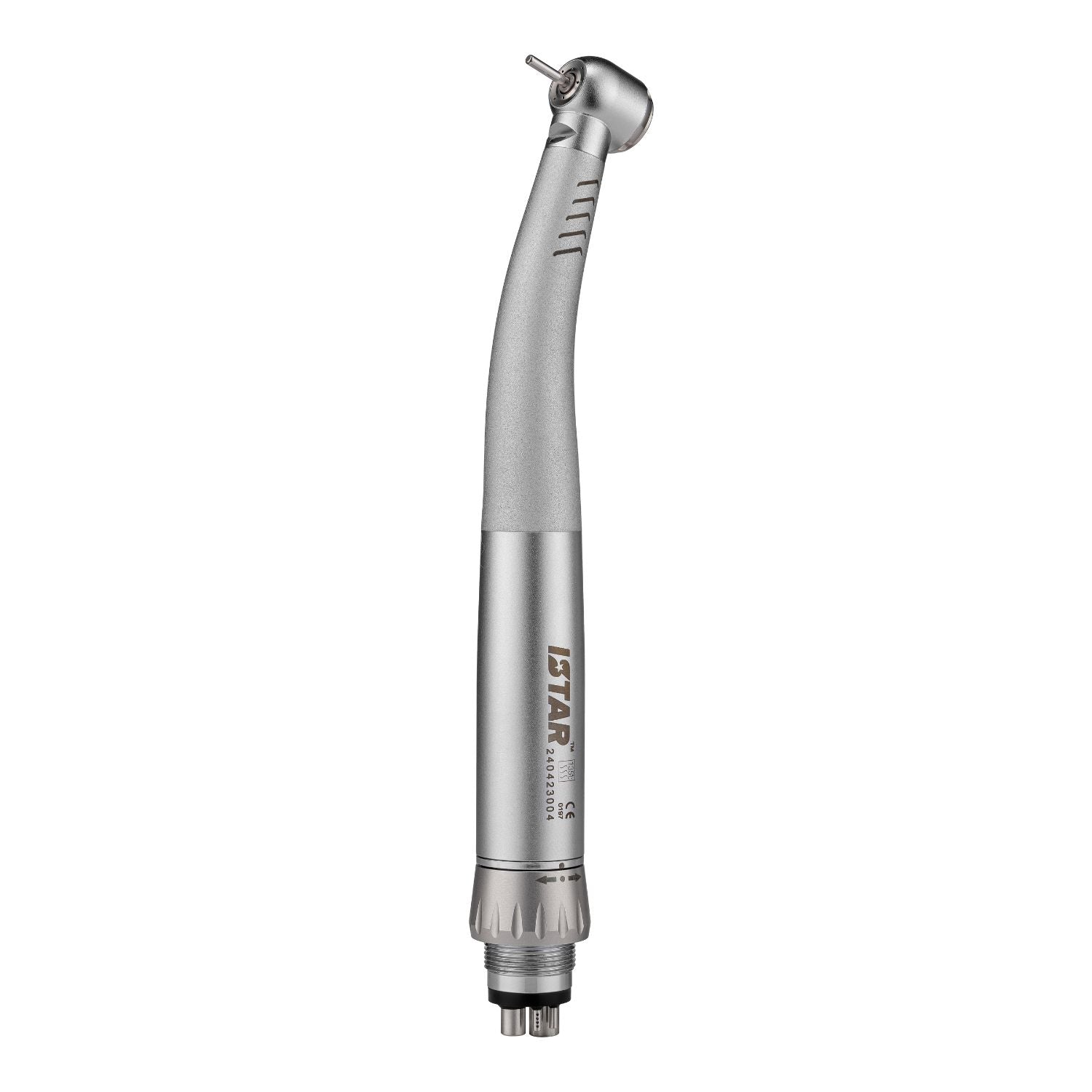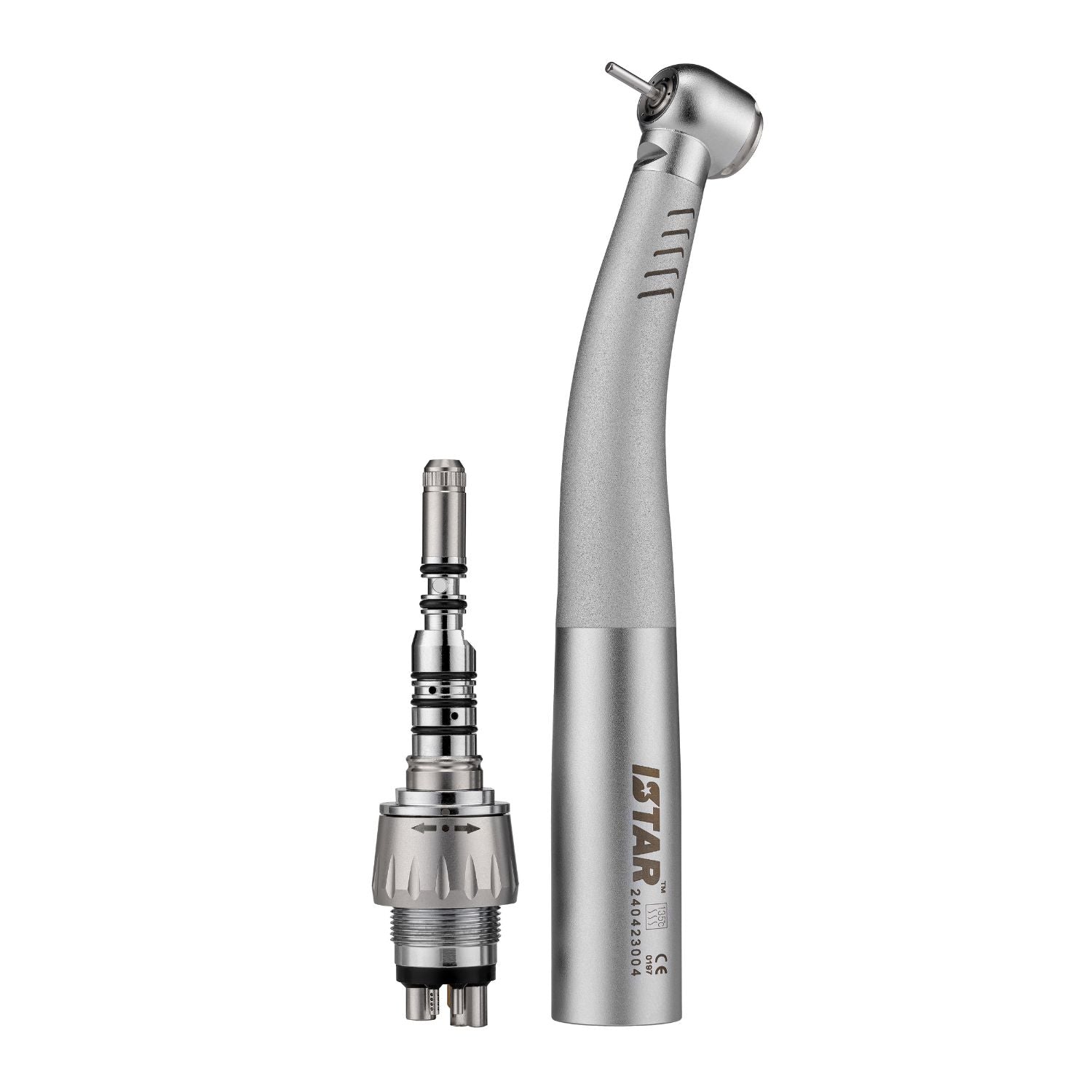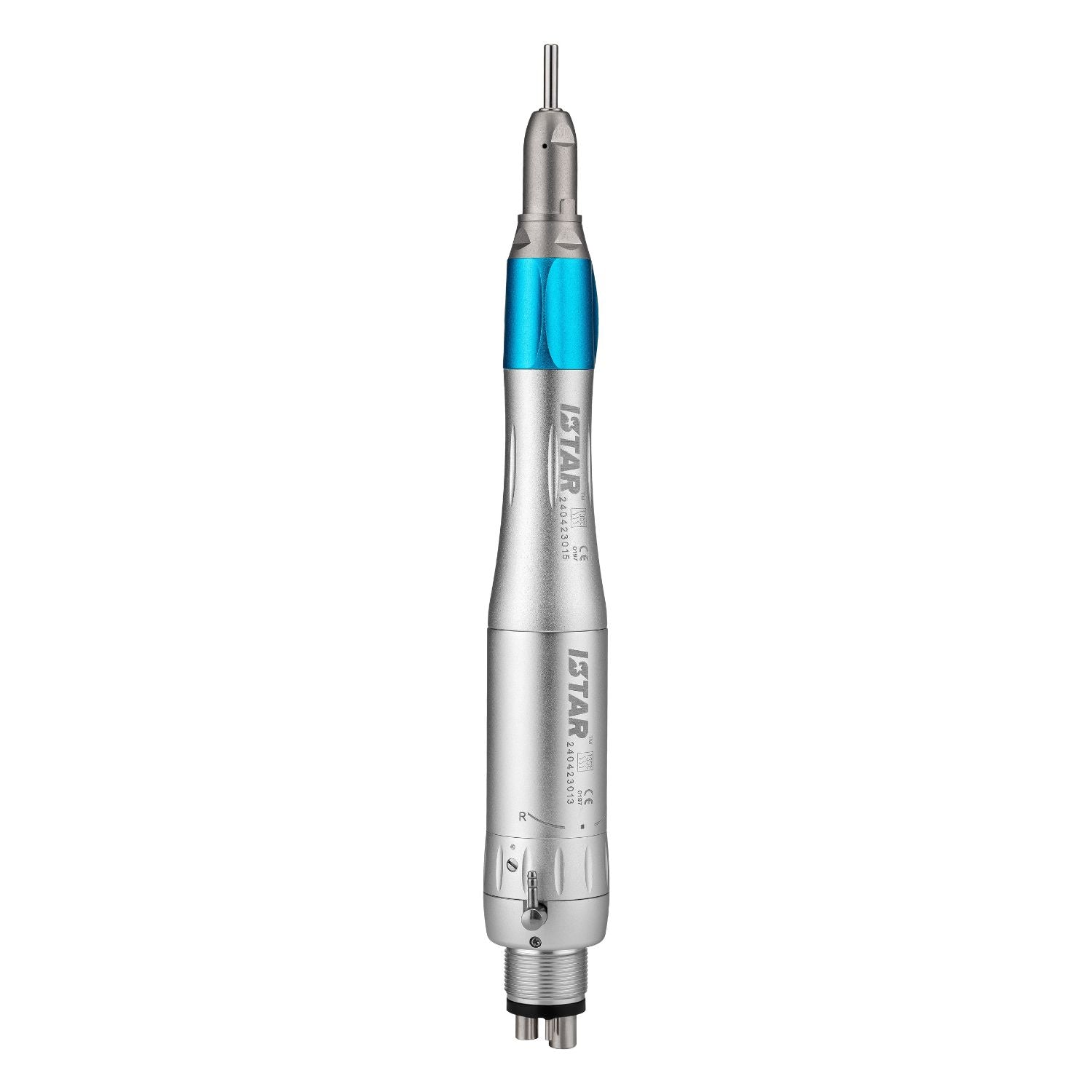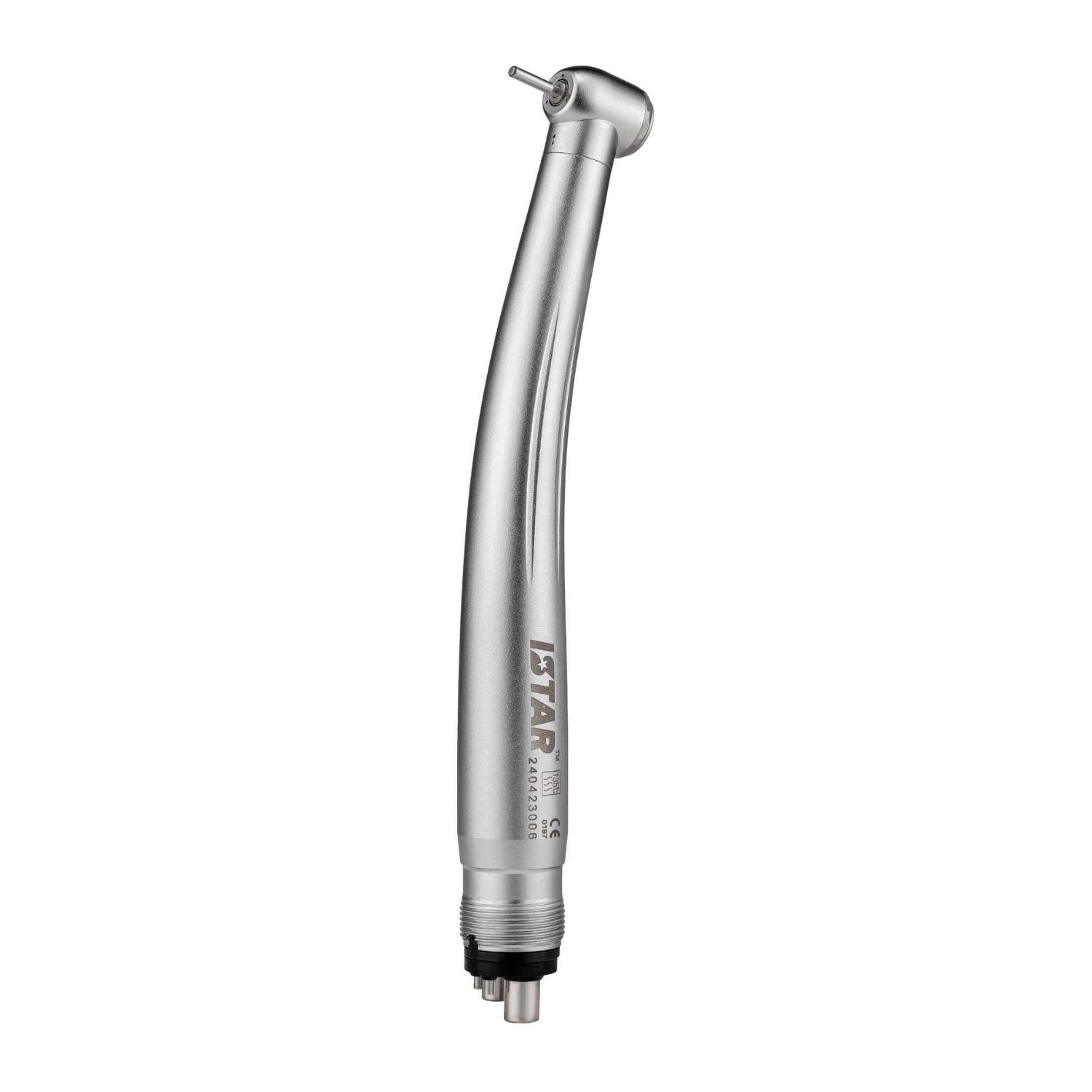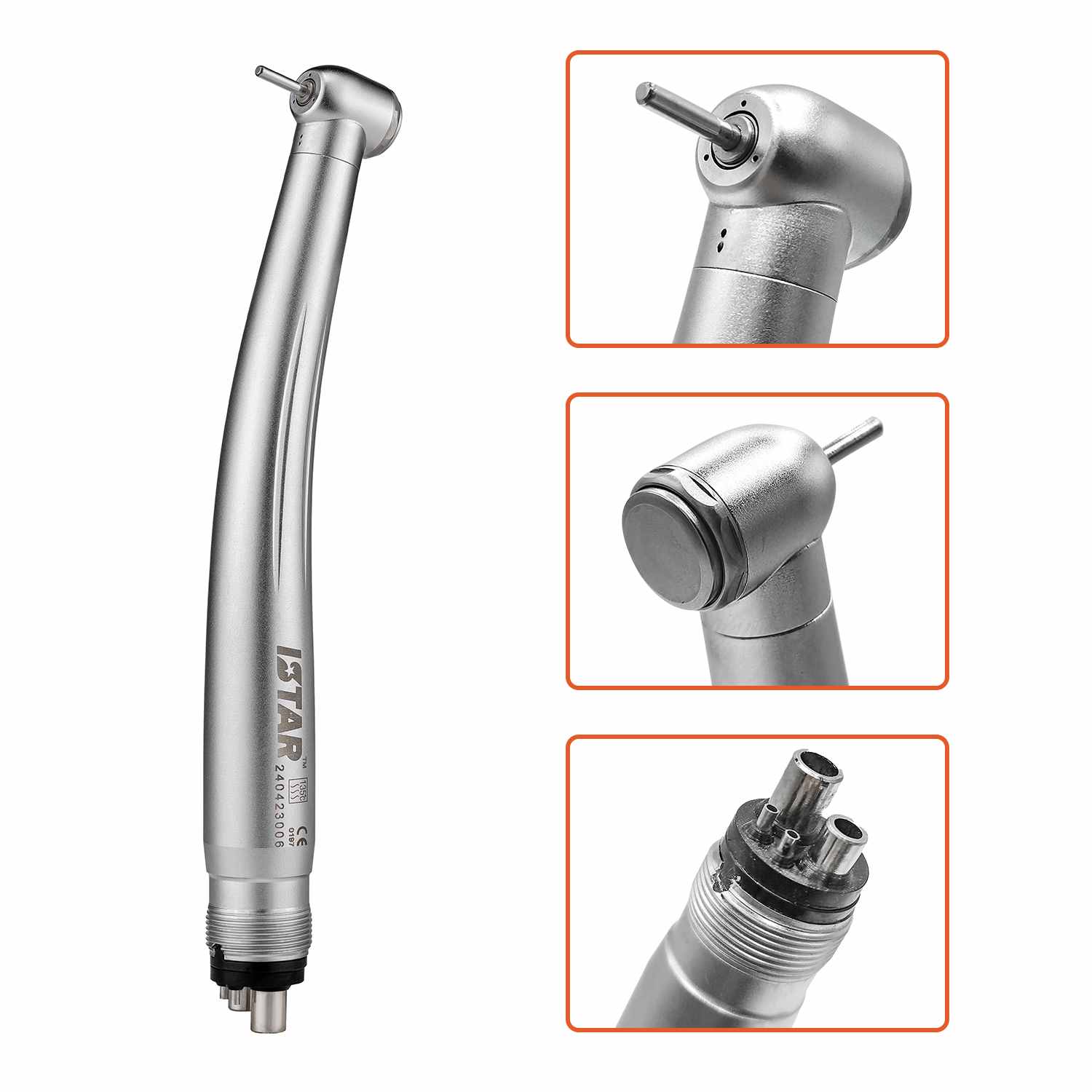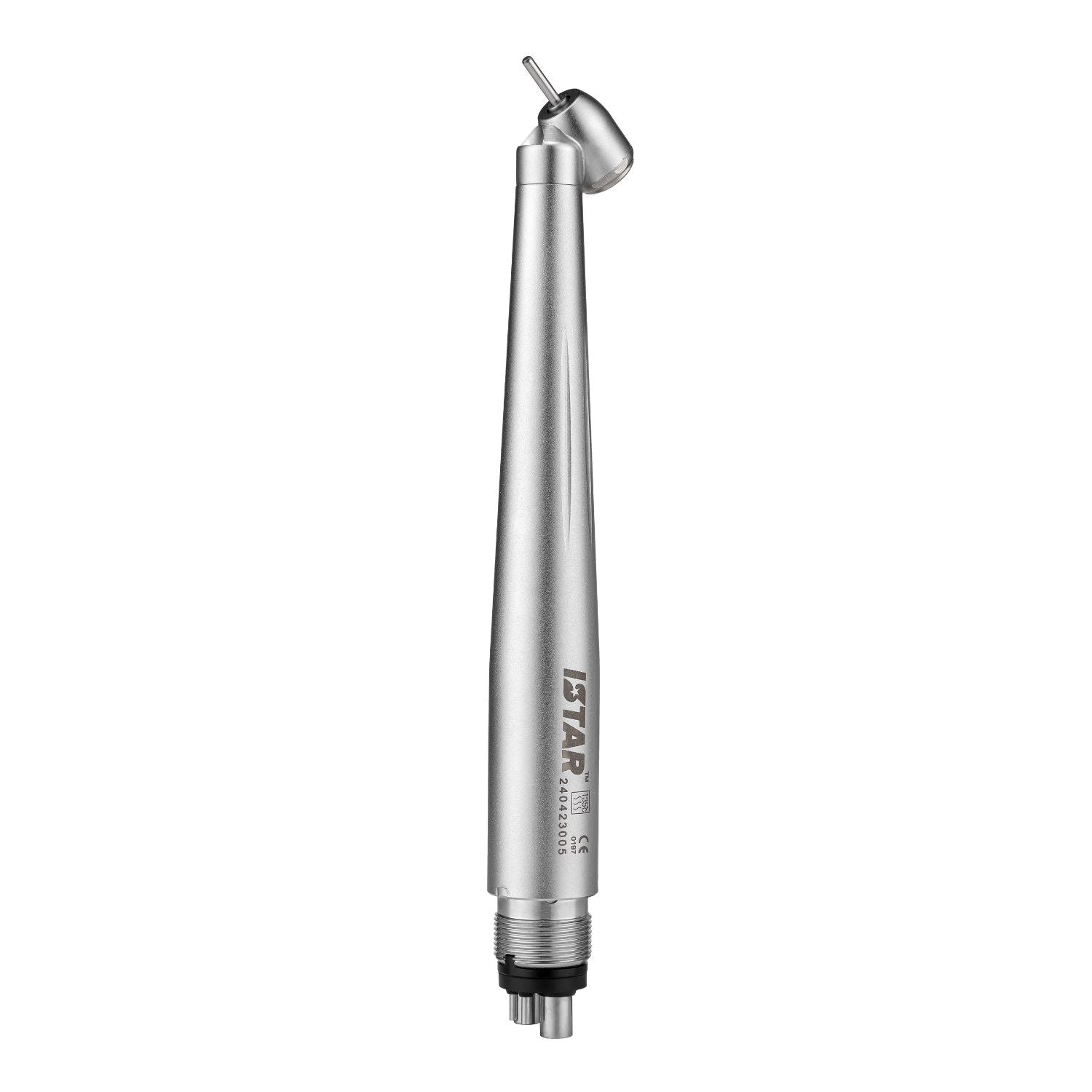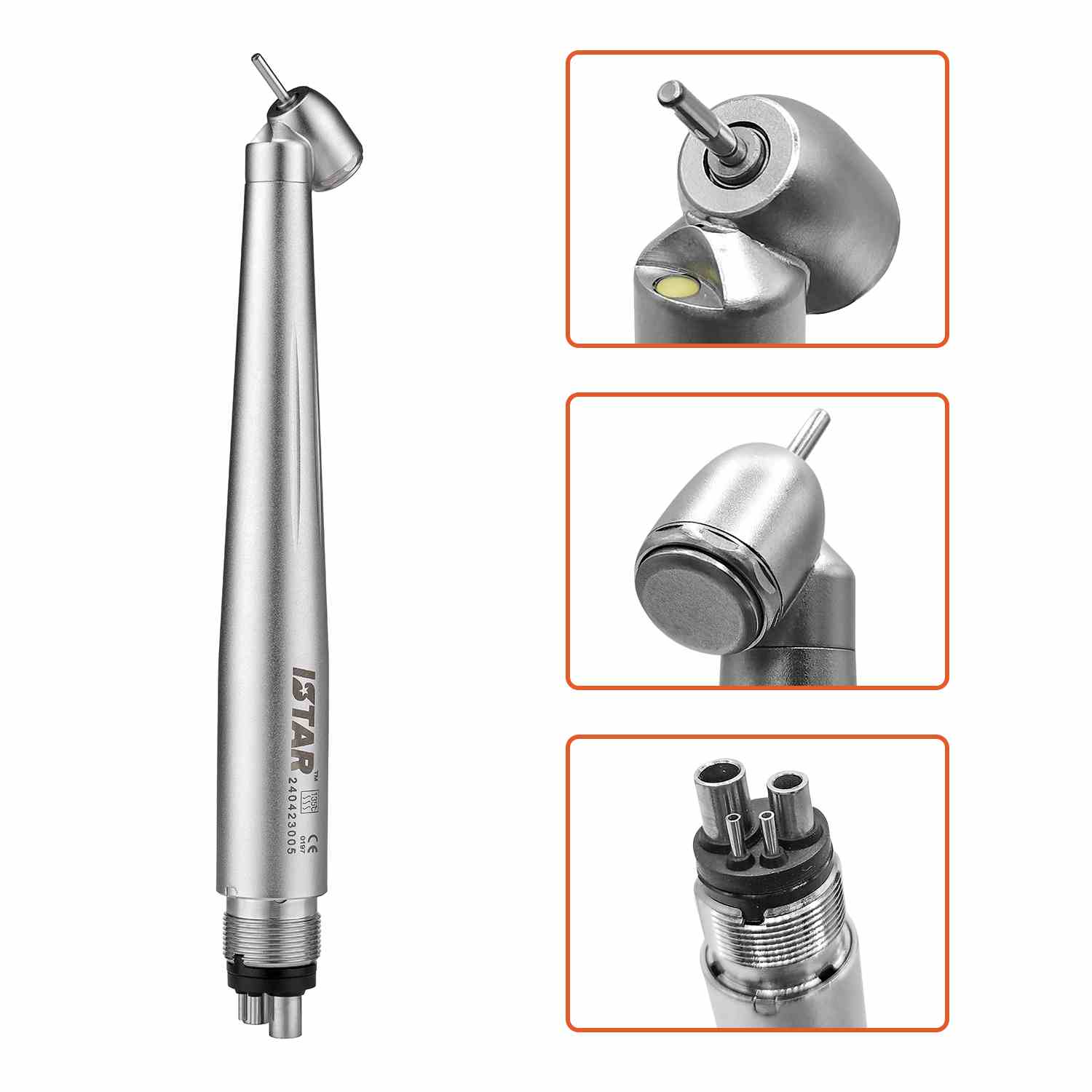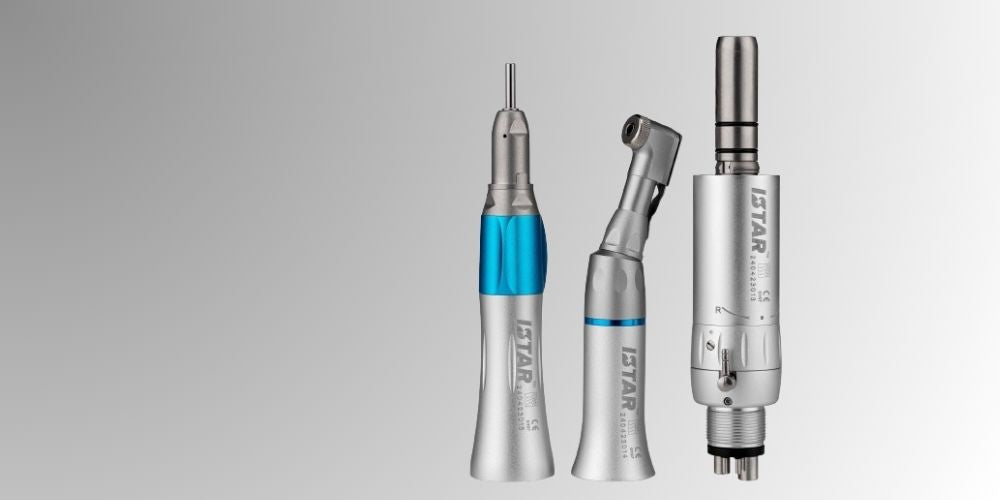
Istar Dental Supply
By choosing Istar's 2/4 hole dental handpiece, you can benefit from its versatility, ease of use, and reliable performance, all at a cost that suits various budgets.
Key Features

FDA and CE Certifications
Our 2/4 hole dental handpiece is built to deliver stable and reliable performance, ensuring smooth operation during every dental procedure.
With FDA and CE certifications, you can trust that our dental high speed handpiece 2/4 hole meets the highest quality and safety standards, providing peace of mind for both you and your patients.

Durability and Advanced Materials
Made from wear-resistant advanced materials, our 2/4 hole dental handpiece guarantees long-lasting durability.
This means you can rely on it for extensive use without worrying about frequent repairs or replacements, ultimately saving you time and money.

Enhanced Control and Smooth Operation
Designed with precision engineering, our dental high speed handpiece 2/4 hole offers better control and smoother operation.
This ergonomic design not only improves your efficiency but also ensures a comfortable experience for your patients, reducing the risk of discomfort or accidental injury.

Competitive and Preferential Pricing
We understand the importance of cost-effectiveness in running a successful dental practice. Our 2/4 hole dental handpieces are offered at preferential prices, providing excellent value without compromising on quality.
This makes our product an affordable choice for equipping your clinic with top-tier dental tools.
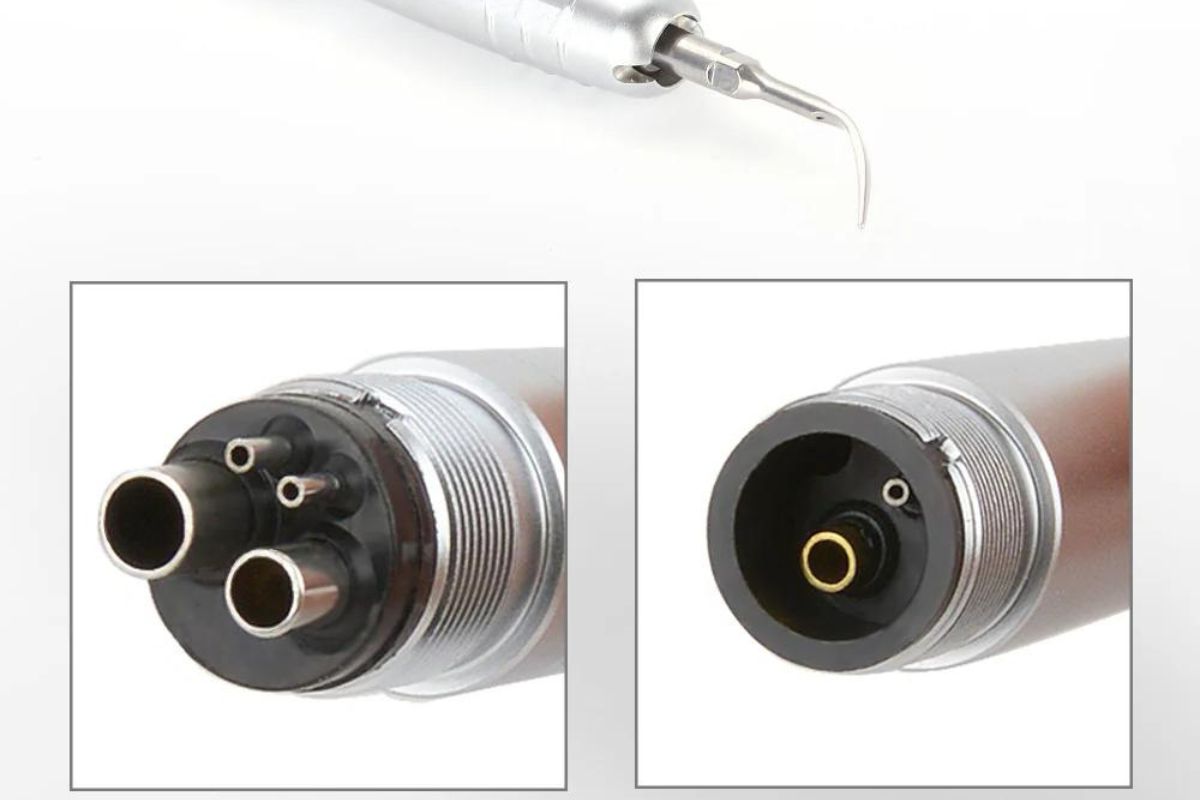
What is a 2/4 Hole Dental Handpiece?
2/4 hole dental handpiece refers to the type of connection it has for attaching to a dental unit. The "2-hole" or "4-hole" designation indicates the number of holes on the connector end of the handpiece.
These holes are used for air and water supply, and in the case of the 4-hole handpiece, for transmission of water, driving air, atomizing air and return air as well.
How to Use the Dental High Speed Handpiece 2/4 Hole?
- Connecting to the Dental Unit: Ensure the dental unit is compatible with the handpiece. Attach the handpiece to the hose connector on the dental unit, aligning the holes properly to ensure a secure fit.
- Check Air and Water Supply: Verify that the air and water supplies are properly connected and functional. Adjust the air and water flow if necessary.
- Operate the Handpiece: Once connected, use the foot pedal or control system of the dental unit to start and stop the handpiece. Ensure the high-speed rotation is smooth and consistent.
- Maintenance: After each use, follow the manufacturer's instructions for cleaning and maintenance. This typically involves flushing with water and air, and sometimes using lubricants.

FAQ of 2/4 Hole Dental Handpiece
Number of holes:
- 2-hole handpieces have 2 holes on the connector to drive the transmission of air and water;
- The connector of the 4-hole handpieces has 4 holes for the transmission of water, driving air, atomizing air and return air.
Function:
- The 2-hole handpiece is relatively simple in design and is used for basic dental surgeries, commonly used in dental restoration and preventive surgeries;
- The 4-hole handpiece offers the added functionality of reducing fluid and debris residue, disinfecting and cleaning, and is widely used in restorative dentistry, endodontics, periodontics and oral surgery.
Compatibility:
- The 2-hole handpiece is compatible with dental equipment using a two-hole connection system. In dental offices using older equipment, they may be the first choice or as a backup handpiece;
- The 4-hole handpiece is compatible with dental delivery systems that use a four-hole connection system, which is standard in modern dental offices. They are widely used in dental offices due to their versatility and compatibility with advanced equipment.
Visibility:
- 2-hole handpieces typically do not include fiber optic lighting, which may result in slightly reduced visibility compared to 4-hole handpieces;
- 4-hole handpieces often contain fiber optic lighting for enhanced visibility and direct illumination of the treatment area. This is especially useful for surgeries that require precise visualization.
Taking a 4-hole dental handpiece as an example, each hole has a different function.
1. Driving air hole: used to connect the driving air source of high-speed dental handpieces, and use air pressure to drive the high-speed rotating wind wheel to complete drilling and grinding operations.
2. Water hole: used to connect the water source, which can cool the wind wheel of the high-speed dental handpiece to prevent overheating damage. It can also rinse the teeth and wash away the debris generated during drilling and grinding.
3. Air return hole: used to recover debris and liquid generated during high-speed handpiece drilling and grinding to prevent liquid from remaining in the oral cavity and causing secondary contamination to the patient.
4. Atomization pore: used to connect the atomization air source, which can spray medicine or water molecules to achieve disinfection, cleaning and moistening of the oral cavity.
2-Hole Handpiece
- Simple to use - 2-hole handpieces have a simpler design with fewer components, making them easier to maintain and repair.
- Low Price - 2-hole handpieces are generally less expensive than 4-hole handpieces, making them a cost-effective choice for dental offices.
- Low maintenance costs - Due to their simple design, 2-hole handpieces are less prone to technical issues or malfunctions and overall have lower maintenance costs.
4-Hole Handpiece:
- Strong functionality - Compared with 2-hole handpieces, 4-hole handpieces provide additional air return holes and mist holes, which can reduce liquid and debris residue for disinfection and cleaning. Suitable for various dental surgeries and more functional.
- High comfort--4-hole handpieces often feature ergonomic designs and advanced features to improve dentists' comfort and efficiency. They may have a lightweight, well-balanced design that reduces hand fatigue during long procedures.
- Standardization - 4-hole handpieces have become the standard in modern dental offices. They are compatible with most dental equipment using a four-hole connection system, ensuring seamless integration and interoperability with existing equipment.
The price of a 2/4 hole high-speed dental handpiece can vary significantly based on factors such as brand, features, and quality. On average, prices range from $100 to $500.
Higher-end models with advanced features such as LED lighting, superior bearings, and ergonomic designs can cost more, while basic models are available at lower prices.
Investing in a high-quality handpiece can ensure better performance and longevity, making it a worthwhile expenditure for dental practices.
Any question?
If we still haven't answered your question, you can contact us below and we will get back to you as soon as possible.

